Growth plan sees forestry boom ahead
 Rennie NEWS Forestry
Rennie NEWS Forestry
ATRANSFORMATION plan to move forestry’s focus from logs to high-value wood products will nudge it up the ranks in export earning values if its goals become reality in coming years.
So said Minister for Forestry Stuart Nash at the launch of the forestry and wood-processing Industry Transformation Plan (ITP) at Fieldays.

He hailed it as an aspirational document providing a roadmap that includes lifting the sector’s export earnings for value-added wood products by $600 million by 2040.

With its broad cross-industry support from processors, iwi and politicians, Nash said, the plan is not “some document dreamt up by the Beehive”.

“We are talking about a concept not of volume, but of value,” he said.
He outlined the plan’s key initiatives, which include diversifying away from pinus radiata to alternative types, to account for 20% of plantings by 2030.

At present only about 10% of New Zealand’s exotic plantations are non-radiata. The plan sees planting as a means to improve the sector’s resilience to climate change and to reduce the
biological risk of monocultural plantations.
Another initiative is to invest in research identifying how the use of wood products can be increased in mid-rise and commercial construction.

At present about 1.4 million cubic metres of wood products are used in construction in NZ every year, and the plan is to lift this by an additional 400,000 cubic metres a year by 2030.
The plan also aims to have overall wood processing increase by 3.5 million cubic metres, or 25% by 2030, significantly scaling up domestic processing of underused lower grade logs and reducing the number of unprocessed logs exported.

The plan aims for the sector to help reduce national emissions by becoming a source of lowcarbon bio-alternatives to coal.
This includes providing over 16 million tonnes of wood fuel to replace coal, producing alternative fuels for transport, and providing 50 million cubic metres of wood biomass to replace 9 billion litres of fossil fuels.
Ray Smith, director-general for the Ministry for Primary Industries welcomed the ITP’s launch as critical to the sector’s future.
“MPI is keen to grow and support some of what we have lost over time from the sector,” he said.
Family fun at Fieldays
Nick and Hope Reid and their boys soak up the sunshine at Fieldays at Mystery Creek as what is traditionally a wintry day out took place in early summer.

Fully woolly fill makes for warm fuzzies

Wilson & Dorset’s industry-first fully woolly furnishing series has Amanda Dorset overflowing with excitement.
The
BLNZ.
OPINION 23
New Zealand’s first largescale vertical farm will soon start production in Hamilton.
1
PEOPLE 24
government’s U-turn on sequestration shows it is listening to farmers, says
NEWS 7
It was an outstanding year for the meat industry, but has it resolved all of its issues?
TECHNOLOGY 25 Vol 20 No 47, December 5, 2022 View online at farmersweekly.co.nz $4.95 Incl GST Communicator of the year 5
Continued page 7
Richard
SCOTT (ORCHARD MANAGER) OF WHIRITOA ORCHARDS, BAY OF PLENTY
CREATING OPPORTUNITIES FOR WHĀNAU AND THE LAND
The whānau behind this Whakatāne property has transformed a struggling kiwifruit orchard into a top performer while also caring for and improving the land.

Whiritoa Gold and Whiritoa Organic orchards grow both conventional and organic gold kiwifruit across a total of nine hectares. Led by orchard manager Helen Scott, the team is striving to leave the land in a better state than it was found, for the enjoyment of future generations – whether or not they’re growing kiwifruit.
Since purchasing the land in 2017 and 2019, Māori Investments Limited has extensively developed the orchards. Whiritoa Gold was bought as a struggling, flood-damaged orchard and has since been transformed into a healthy, well-performing business.
A key priority was establishing good drainage and restoring soil health across the orchards and it has paid off. Most recently, they’ve lifted production so they’re harvesting an additional 10,000 trays of kiwifruit per hectare – up to a maximum of 21,000 trays.
Whiritoa is focused on carrying a sustainable, good-quality crop that cares for both land and plants. The team is trialling a mixture of cover crops and using fertigation to ensure the plants get the right nutrients.
and empowered so their work becomes a career rather than just a job. In addition, fresh vegetables are grown for the whānau to help improve their personal health.
The company’s overarching mission is to maximise the land’s potential, while acting as a guardian of its taonga – and this strategy guides all parts of the business. They see Whiritoa as a great opportunity to improve both whānau and land into the future.

As well as receiving this year’s Regional Supreme Award, Helen also received:
• Bayleys People in Primary Sector Award
• Norwood Agri-Business Management Award
• ZESPRI® Kiwifruit Orchard Award
Whiritoa entered the Ballance Farm Environment Awards to demonstrate the career opportunities they have created for their whānau. Hiring local is a priority, in particular creating employment opportunities for shareholders and their descendants. All employees are trained, upskilled

“The team is striving to leave the land in a better state than it was found.”
BAL13758_BFEA DPS Series Farmers Weekly DPS_Bay of Plenty_Taranaki_380x545mm_FINAL3.indd 1 2
HELEN
Congratulations to our 2022 Regional Supreme Winners
DAVID & SAMANTHA TURNER OF THE GRANGE, TARANAKI


THIS ELTHAM PROPERTY HAS SPECIAL MEANING FOR THE TURNERS
David’s great grandfather George Turner bought The Grange in 1880, cleared the land and established it as a successful farm that is now being managed by the family’s fourth generation. It’s no wonder that the Eltham property has special meaning for the Turners and that they feel privileged to be making daily decisions that aim to continually improve the property.
Twenty years ago, David returned from the UK with his wife Samantha and joined his parents in managing the sheep, beef, and dairy support farm.
Owned by a family trust, about half of the business is comprised of heifer grazing on a weight-gain payment system, with the balance split between sheep and beef.
300 dairy heifers are grazed for 12 months and leave the property in-calf. About 800 Romney ewes are mated to Romney or Polled Dorset rams, with female Romney lambs kept as replacements and the remainder sold prime.
The beef aspect of the business sees weaner calves purchased, farmed for about two years and usually sold prime, providing resilience to the farm.
classes to land carrying capacity as well as pest monitoring and control.
The family is focused on staff welfare, minimising waste, and increased biosecurity and putting time into increasing the farm’s biodiversity.


Looking to the future, they’re keen to further improve pasture management, particularly by replacing old pasture species.
With the farm’s significant family history, David and Samantha are most proud of being able to involve their children in the day-to-day running of the business and the work they are all doing to ensure its sustainability into the future.


Several sustainability initiatives are underway at The Grange, including the planting and management of riparian areas, where fencing is used to exclude cattle from many areas of the farm and a comprehensive weed management programme has allowed the riparian planting to flourish. The team has also had good success with the management of soils and matching livestock
As well as receiving this year’s Regional Supreme Award, David and Samantha also received:
• Ballance Agri-Nutrients Soil Management Award


• Beef + Lamb New Zealand Livestock Farm Award
• Taranaki Regional Council Sustainability Award
“The children are involved in the day-to-day running of the business.”
Visit nzfeawards.org.nz to learn more. 2023 AWARDS 28/11/22 4:39 PM
PROGRAMME UNDERWAY
3
EDITORIAL
Bryan Gibson | 06 323 1519
Managing Editor bryan.gibson@agrihq.co.nz
Craig Page Deputy Editor craig.page@agrihq.co.nz
Claire Robertson
Sub-Editor claire.robertson@agrihq.co.nz
Neal Wallace | 03 474 9240
Journalist neal.wallace@agrihq.co.nz
Gerald Piddock | 027 486 8346
Journalist gerald.piddock@agrihq.co.nz
Annette Scott | 021 908 400
Journalist annette.scott@agrihq.co.nz
Hugh Stringleman | 09 432 8594 Journalist hugh.stringleman@agrihq.co.nz
Richard Rennie | 027 475 4256 Journalist richard.rennie@agrihq.co.nz
Nigel Stirling | 021 136 5570 Journalist nigel.g.stirling@gmail.com
PRODUCTION
Lana Kieselbach | 027 739 4295 production@agrihq.co.nz
ADVERTISING MATERIAL
Supply to: adcopy@agrihq.co.nz
SUBSCRIPTIONS 0800 85 25 80 subs@agrihq.co.nz PRINTER Printed by Stuff Ltd
SALES CONTACTS
Andy Whitson | 027 626 2269 Sales & Marketing Manager andy.whitson@agrihq.co.nz

Steve McLaren | 027 205 1456
Auckland/Northland Partnership Manager steve.mclaren@agrihq.co.nz
Jody Anderson | 027 474 6094 Waikato/Bay of Plenty Partnership Manager jody.anderson@agrihq.co.nz
Donna Hirst | 027 474 6095
Lower North Island/International Partnership Manager donna.hirst@agrihq.co.nz
Andy Whitson | 027 626 2269
South Island Partnership Manager andy.whitson@agrihq.co.nz
Debbie Brown | 06 323 0765
Marketplace Partnership Manager classifieds@agrihq.co.nz
Grant Marshall | 027 887 5568
Real Estate Partnership Manager realestate@agrihq.co.nz
Andrea Mansfield | 027 602 4925
National Livestock Manager livestock@agrihq.co.nz
PUBLISHERS
Dean and Cushla Williamson Phone: 0800 85 25 80 dean.williamson@agrihq.co.nz cushla.williamson@agrihq.co.nz
Farmers Weekly is Published by AgriHQ PO Box 529, Feilding 4740, New Zealand Phone: 0800 85 25 80 Website: www.farmersweekly.co.nz







ISSN 2463-6002 (Print)
ISSN 2463-6010 (Online)
News in brief Fonterra changes
Legislation enabling Fonterra to undertake its capital restructuring has passed its final reading in parliament.
Under the Dairy Industry Restructuring (Fonterra Capital Restructuring) Amendment Act the new structure, which should be in place by March, will set out a new minimum shareholder requirement of one share per 3kg of milk solids produced, down from the current one-for-one requirement.
New McCain boiler
The McCain Foods plant in Timaru has converted its coal-fired boiler to one using woodchips.
The project has cost $5.6 million, of which McCain received $2.9m from the government’s Decarbonising Industry Fund. The new boiler will remove 30,000t of carbon from the atmosphere, 95% of the plant’s total carbon emissions. McCain has also implemented a heat-recovery system, using mechanical vapour recompression to reduce steam demand.
Woolhandling success
The rookie New Zealand woolhandling team of Angela Stevens and Cushla Abraham scored a win over Australia in a recent transTasman test match in Bendigo, Australia.
NZ’s Allan Oldfield and Tony Dobbs also won a bladeshearing test, maintaining NZ’s unbeaten record since 2010, but veteran Nathan Stratford and Leon Samuels and Stacey Te Huia were unable to break NZ’s sequence of defeats in machine-shearing tests in Australia since that year.
Ballance award winners
Ashburton father and son Phillip and Paul Everest are the new National Ambassadors for Sustainable Farming.
The pair received the accolade at the 2022 Ballance Farm Environment Awards in Christchurch. The Everests run Flemington Farm in Ashburton, a 255ha property they have expanded into a sustainable dairy and beef farm.
Back in 1860, exporting meat to the other side of the world seemed about as easy as nailing gravy to the ceiling. But a few determined kiwis took the bull by the horns and now our grass-fed beef and lamb is sought-after all around the globe.
At AFFCO, we see the same pioneering spirit alive and well in farmers today. We’re playing our part too – exploring every opportunity to take New Zealand’s finest farm-raised products to the world.
WWW.AFFCO.CO.NZ 0800 233 2669 our pioneering spirit tells us nothing’s out of reach WAVE200472 AFFJ200472 NZ Farmers Weekly Strip Ad FA.indd 1 24/08/22 3:22 PM 4 New Zealand’s most trusted source of agricultural news and information Contents Advertise Get in touch POLL POSITION: Global head of agribusiness for KPMG Ian Proudfoot says the food and fibre sector will become an election campaign battleground next year. STORY P14 News . . . . . . . . . . . . . 1-17 Ag&Ed . . . . . . . . . . 18-19 Opinion . . . . . . . . . 20-23 People . . . . . . . . . . . . . 24 Technology . . . . . . . . . 25 World . . . . . . . . . . . . . . 26 Real Estate . . . . . . 27-32 Marketplace . . . . . 33-34 Livestock . . . . . . . . 35-37 Markets . . . . . . . . . 38-43 Weather . . . . . . . . . . . . 44
Delivered by Reach Media Ltd
Gibson recognised for telling it like it is
Staff reporter PEOPLE Awards
FARMERS Weekly managing editor Bryan Gibson has been named Ravensdown Agricultural Communicator of the Year.

Given each year by the New Zealand Guild of Agricultural Journalists and Communicators, the award honours individuals or groups that have contributed to the agricultural industry
and community by communicating issues, events and information.
Gibson has edited Farmers Weekly since 2014, leading its editorial team through coverage of numerous contentious issues.

Ravensdown chief executive Garry Diack praised Gibson as a sought-after commentator on NZ agriculture.
“At such a tumultuous time for the rural sector, having a cool-headed, courageous and clear communicator at the helm of rural media is more
important than ever,” Diack said.
Guild president Neal Wallace said Gibson leads a team that is a trusted source of information and balanced stories.
“In a year that has been dominated by confronting issues for rural communities, we’re delighted to see Bryan recognised for his role in tackling deeply divisive issues with courage and wisdom,” he said.

The award was announced at a function at the National Fieldays.
Land use has to change to meet targets
Neal Wallace NEWS Climate Change
FARMERS have the technology to achieve 2030 methane reduction targets but meeting the 2050 goals will require a combination of improved technology and land use change.
That is the conclusion of a report by Lincoln University’s Agribusiness and Economics Research Unit for Westpac, which focuses on the farm-level risks and opportunities expected from climate change.
“Importantly, the report finds there is already a range of existing management options available to assist farmers in strengthening the physical resilience of their farming systems and meeting NZ’s 2030 agriculture climate targets, with only a few requiring an initial investment of capital,” said Westpac’s head of agribusiness, Tim Henshaw.
He said the report is a summary of research for farmers on the
impact of climate change on agriculture.
Henshaw was enthusiastic that fine-tuning management means farmers can meet their first methane reduction targets, saying the key is to share knowledge and formulate a plan.
“There is no one answer here, no silver bullet but there are a bunch of things we can do,” he said in an interview.
The report found that changes to the management of feed, pasture, stock, effluent, crops and soil should enable farmers to meet 2030 targets, a 10% reduction below 2017 levels, but this may require increases in labour and upskilling. Fact sheets are included to provide guidance on what changes may be required.
Meeting 2050 targets will require new technology.
The authors warn New Zealand to expect ongoing warming throughout this century, with extreme heat and heatwaves likely to be more common and extreme cold temperatures and frosts likely to decrease.
Rainfall patterns may change, with the west and south of NZ wetter and the north and east of the North Island drier.
The intensity of extreme rainfall is likely to increase and winds more prevalent across central NZ, particularly in winter.
There is no one answer here, no silver bullet, but there are a bunch of things we can do.
 Tim Henshaw Westpac
Tim Henshaw Westpac
Pasture growth is likely to increase but pests and disease may worsen and irrigation become less reliable due to water variability and drought.
Climate change is likely to increase heat stress in animals and plants and drought is set to become more frequent.
Dealing with these challenges requires a mix of cutting production costs through
efficiency, low-emission energy sources and farm equipment, increasing productivity through techniques such as precision agriculture, or grasping the opportunities presented by a warmer climate.
Cutting livestock numbers will require an accompanying improvement in per head productivity to ensure financial stability.
The authors say transitioning to low-carbon agriculture will create opportunities from increasing profitability from diversifying farm systems, product differentiation, preferential market access, securing intellectual property or earning higher prices from climate-related disruption in global markets.
Some farms are likely to be unprofitable in drought years.
Case studies show a Canterbury dairy farm facing a year-long moderate drought could have a 30% decline in operating profit widening to a 42% reduction from severe drought.
A two-year drought on a North
Island hill country farm could cause a 10% cut in operating profits for the first year, rising to 46% in the second.
Higher winter temperatures may affect the feasibility of growing green varieties of kiwifruit in the Bay of Plenty by 2050.
Transitioning to gold is climatically feasible but Zespri, which holds the licence and regulates the supply of licences for the variety, could limit the ability to transition from green to gold fruit.
Kiwifruit is the highest performing land use type in terms of gross margin per hectare, outperforming pipfruit and viticulture by over $15,000/ha and avocados by over $22,000/ha.
Henshaw said the report will help the bank finalise the shape of its Sustainable Agribusiness Loans project, which is being piloted this year with a small group of farming customers.
To qualify for discounted finance, customers must meet sustainability criteria.
5 FARMERS WEEKLY – farmersweekly.co.nz – December 5, 2022 News 5
EDITORIAL EXCELLENCE: Ravensdown chair Bruce Wills and the Ravensdown Agricultural Communicator of the Year, Farmers Weekly managing editor Bryan Gibson.
Photo: Emma McCarthy
Zespri moves to reset after bruising year
Richard Rennie NEWS Horticulture
THE COMING kiwifruit season will provide a reset opportunity for Zespri as it strives to lift crop quality and restore a bruised reputation after last season’s problems.
Zespri CEO Dan Mathieson said the company is pulling out all the stops to revisit its entire supply chain to eliminate the risk of another season where quality issues saw it pull $3.36 a tray off SunGold kiwifruit’s value and $2.10 a tray off Green’s value.


All up, growers have borne the cost of poor-quality fruit downgrades to the tune of almost $500 million, well up on typical levels of $120m-$150m.
Speaking to growers at Fieldays in Hamilton, Mathieson acknowledged efforts to look for greater transparency through the supply chain.
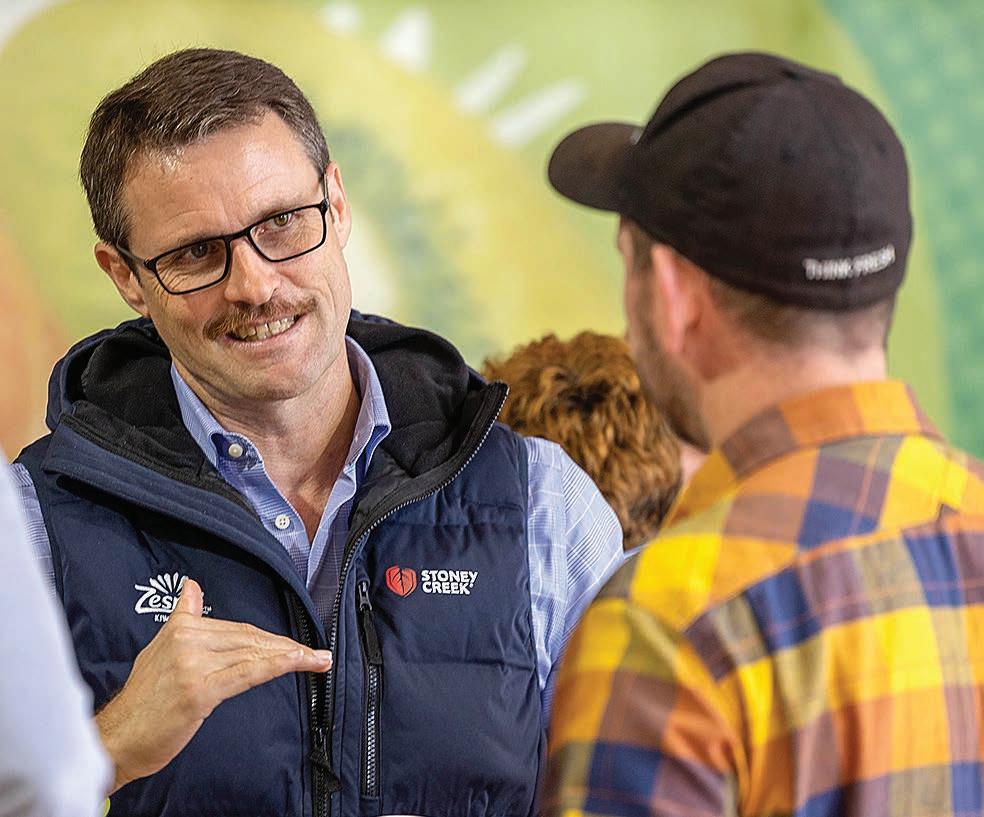
Covid’s corrosive effect throughout the economy was
highlighted by the kiwifruit sector’s struggles to harvest the year’s crop, at a time when it was already 6000 workers short.
Covid pressure right at harvest peak not only left growers without enough harvesters, but also left Zespri short on auditing crews.
The problems were also attributable to pressure on growers to deliver early-harvested fruit in an attempt to manage covidinduced staff shortages. The resulting volumes of long-stored fruit exacerbated the quality problems, with fruit eventually decaying.
“We know we incentivised growers for early-harvested, long-stored fruit. We are looking at how do we incentive better behaviour at harvest – if the fruit being picked is damaged, it doesn’t matter what happens after that, the damage is done.”
Similar pressures were experienced further down the supply chain and New Zealand staff had to work hard to remove as much damaged fruit as possible before it hit the shelves.
We are looking at how do we incentive better behaviour at harvest – if the fruit being picked is damaged, it doesn’t matter what happens after that, the damage is done.
Dan Mathieson Zespri
This year’s harvest of 167 million trays represented a step back in volume from the previous year’s 178 million trays.
Mathieson said he expects 2023’s harvest to be “flat at best”.
This was in part thanks to the October frost event that came hard on the heels of a below-average bud burst, the result of a lack of winter chilling.
Initial survey work indicates frost losses of 10-20%, and they are “more likely” to tend towards 20%.
The new Ruby Red fruit is likely to have incurred losses of 15-25% on its early commercial plantings.
Mathieson said the second year of lower-than-expected volumes did at least give the sector an
Nestlé-Fonterra partnership sets the stage for net zero
Richard Rennie NEWS Emission


A FONTERRA-Nestlé partnership to run a net-carbon-zero dairy unit in Taranaki ratchets up expectations on New Zealand dairy farmers to fall in line with growing pressure from global food giants to meet customer demands.
A bevy of political and industry heavyweights announced the launch of the Fonterra-Nestlé initiative at Fieldays at Mystery Creek, with Prime Minister Jacinda Ardern heralding the project as a

first for NZ and one that will give farmers the tools to meet zerocarbon expectations.
“We know we have to reduce our biogenic emissions from agriculture if we are to meet our global obligations and our customers’ demands,” she said.
She said her recent experiences travelling with assorted trade delegations and Minister of Agriculture Damien O’Connor had allowed her to see first-hand the expectations held in those markets when it comes to meeting zerocarbon goals.
“We have to lead the charge and the rest of the world is waiting for
us to show them how it is done,” she said.
Fonterra CEO Miles Hurrell told the gathered shareholders the dairy unit, which is being run with partner Dairy Trust Taranaki, will have some tough and ambitious goals to meet in coming months and years.
“This new partnership will look at ways to further reduce emissions, increasing the country’s low-emissions advantage over the rest of the world,” he said.
Nestlé is Fonterra’s largest and most important global corporate customer and has declared the goal of reducing its Scope 3
emissions as part of its goal of netzero emissions by 2050.
Scope 3 emissions are those emissions beyond the company’s immediate processing operations, extending to suppliers including farmers.
The Taranaki project will last five years and be run on a 290ha demonstration farm surrounding Fonterra’s Whareroa factory site.
It’s the first of its type in NZ, but Nestlé has more than100 pilot projects running with partners around the world, including 20 net-zero demonstration dairy farms in places as varied as South Africa and Germany.
opportunity to catch its breath as it reset quality parameters.

He advises growers to look further out to 2024 when Zespri anticipates a surge in SunGold volumes.
With an additional 750ha coming on stream between 2018 and 2021, and each 750ha tranche representing about 10 million additional trays, the sector is running behind on crop volume growth and well overdue for that volume surge.
Green growers are anticipating a particularly tough year with about half likely to either only break even or be in the red.
“Our goal here is to try and get orchard gate returns up to a consistent $7/tray.
“We are looking at opportunities to bring new Green kiwifruit to market.”
There are four varieties being trialled with the possibility a new one, offering a sweeter taste, will go commercial in 2027.
Despite problems at home, Mathieson was upbeat about market prospects. After an initial drop in Shanghai sales due to lockdowns, volumes have since lifted to pre-lockdown levels for both SunGold and Green.
Meantime the United States is showing growing promise with SunGold kiwifruit the fastest growing fruit item across the country’s fruit category for the past three years, and now totalling about 8 million trays.
Dung is a free gold mine of fertiliser and carbon, if buried. There is only one way to do that rapidly and sustainably. AVAILABLE NOW Boost Your Profits. Improve Water Quality. Contact us Dung Beetle Innovations Shaun 021 040 8685 shaun@dungbeetles.co.nz For more information or to order online go to www.dungbeetles.co.nz LK0113016© Farming For Our Future Generations 6 FARMERS WEEKLY – farmersweekly.co.nz – December 5, 2022 News 6
BETTER: Zespri CEO Dan Mathieson says Zespri is auditing its entire supply chain to resolve quality issues experienced last season.
Photo: Jamie Troughton/Dscribe Media
MORE: P13
WATCHING: PM Jacinda Ardern says the rest of the world is watching New Zealand to learn how we will manage emissions reductions in our farming systems.
Beef + Lamb hails sequestration victory
Wallace & Gerald Piddock NEWS Emissions
THE government’s U-turn on sequestration being included in a farm emissions pricing package shows it is listening to farmers, Beef + Lamb chair Andrew Morrison says.
It also indicates that the government understands the depth of ill-feeling that erupted among farmers following its response to the He Waka Eke Noa (HWEN) emissions pricing proposal.
“They have understood the angst that’s been caused and they have legitimately tried to address this,” Morrison said.
The announcement at Fieldays by senior government ministers will see recognition for more classes of vegetation that sequester carbon.
Prime Minister Jacinda Ardern, Agriculture Minister Damien O’Connor and Climate Change Minister James Shaw announced that from 2025 the government will start the process of collating all “scientifically robust forms of sequestration”.
Introducing more classes of vegetation into the Emissions Trading Scheme (ETS) will follow later. Ardern said submissions on the government’s response to HWEN confirmed sequestration
was a top priority for farmers and critical to making it work.
The HWEN partnership recommended amending the ETS to recognise more vegetation categories that sequester greenhouse gases, but the government’s initial response removed many of those proposed classes.
“It’s something the industry’s asked for but it does have to have a scientific basis. We are confident that we can work with industry on a strategy about how we can account for that on a farm-byfarm level.”
Ardern said the government will be releasing its full response to the HWEN consultation at a later date.
Morrison said it is important for New Zealand Inc that sequestration is recognised.
“Anything you’ve got on farm that’s legitimately sequestering carbon and is incorporated into the national inventory is one less carbon farm that’s going to go in,” he said.
For many extensive farmers, sequestration is the only tool they have available to mitigate the impact of emissions pricing.
“It was good to hear the prime minister reaffirm that.”
“You have to get it scientifically verified that it is actually sequestering carbon – and that’s what the government has announced – and sometimes that takes time.”
The process to jump into the ETS has not always been the easiest and this announcement means those areas of vegetation on farms are recognised until it becomes workable, he said.

He said he understands that it means vegetation on farms such as riparian planting and land in indigenous biodiversity will fall under the “transitional arrangements” definition cited by the government.
Exactly how long the transition will be is impossible to say, but it is less of a concern if a specific piece of vegetation is recognised.
Ardern said the latest move reaffirms a commitment that sequestration will be part of a farm-by-farm strategy on climate change mitigation.
Asked to elaborate on what the government meant when it said it would bring in all “scientifically robust” forms of sequestration into the ETS, Ardern said: “We have to make sure it’s credible, we have to make sure that it stands up internationally, so we have committed ‘yes’ to sequestration as being part of a farm-by-farm approach.
Morrison said it is pivotal that the government is committed to sequestration being recognised from 2025 and that “transitional arrangements” will be in place from 2025 with entry into the ETS to follow later.
That transition is important because scientific validation of different tree species takes time.
“But during that transition time, meanwhile that stuff you know that hand on heart is sequestering even before it goes into the ETS – we still would like that recognition.
Farming leaders – including Morrison – met with the prime minister and ministers at Fieldays on Wednesday, when details of the sequestration were further revealed.

Morrison believed that meeting prompted the prime minister to issue a clarification later in the day.
Rather than chalking it up as a win for the sector, Morrison said it needs to be done as it is in the best interests of the sector.
“If you want farmers to report their emissions and be liable for their emissions, they have to get their sequestrations recognised.”
exports can grow to over $11b by 2030’
Continued page 1
He was optimistic about prospects for NZ’s woodprocessing sector, looking across the Tasman at forecasts that Australia will be increasing its wood product imports from 16% to 30% by the end of the decade.
“Forestry is now sitting alongside horticulture, but exports can grow from $6 billion a year
to over $11b by the end of the decade,” Smith said.







Marty Verry, CEO of Red Stag Timber, NZ’s largest timberprocessing company, said the plan is a good initiative, but there are some significant hurdles for the sector to clear to recognise greater value.
“The biggest hurdle for processors will be getting the value of stored carbon returned to
processors, the same way the value of grown carbon has been returned to foresters, transforming that sector in the process.
Foresters are selling logs and carbon, but processors are only selling wood.”
The processing sector continues to face significantly subsidised offshore processors capable of paying a premium for raw logs from NZ.
Longtime forestry consultant Dennis Neilson said he is wary of the ITP’s plan to increase the variety of species grown for forestry.

“My experience is that most wood baskets around the world will only have one, maybe two species,” Neilson said.
“NZ is talking about diversifying away from [pinus radiata], the most productive, fast-growing
timber in the world. We should be coming back to that, back to doing what we do well.”
He was also concerned about the plan’s failure to address a forthcoming slump in NZ’s timber harvest, with volumes predicted to drop from about 35m cubic metres a year to 25m cubic metres in only a decade’s time.
Contact your local store or call us on 0800 288 558 Delivery time may vary depending on colour & location. NEED A WATER TANK? WE HAVE MAX™ TANKS AVAILABLE NOW. • Tapered walls for increased strength & durability. • Arag lid for easier access & better seal. • Multiple access points around the dome. • Fully accredited. 7 FARMERS WEEKLY – farmersweekly.co.nz – December 5, 2022 News 7
Neal
NATIONAL GOOD: Andrew Morrison says it is important for New Zealand Inc that sequestration is recognised.
‘Forestry
We have to make sure it’s credible, we have to make sure that it stands up internationally, so we have committed ‘yes’ to sequestration as being part of a farm-by-farm approach.
Jacinda Ardern Prime Minister


































































RAV05DEC-FW 0800 73 73 73 www.hawkeye.farm Start ordering with HawkEye
With increasing national regulations and compliance, knowing where and when your nutrients have been applied on-farm is vital. From ordering to recording to reporting, we have you covered. Ensure you have the data you need when you need it. Order your fertiliser nutrients through HawkEye today. Order your Ravensdown fertiliser nutrients Record your proof of placement and activities Reporting made simple for nutrient tracking and compliance 8
HawkEye by Ravensdown
Costs shadow SOPI’s upbeat revenue tale
Richard Rennie NEWS Agriculture

DESPITE a globally volatile trade environment and continuing supply line disruptions, New Zealand’s primary sector is forecast to continue on its strong growth trajectory – but cost pressures are also surging.
The latest Situation and Outlook for Primary Industries (SOPI) report, released at Fieldays at Mystery Creek near Hamilton, forecasts 4% year-on-year growth in the sector’s exports to achieve a record $55 billion by year end June.
The forecast comes in almost $3b ahead of expectations, with relatively strong growth across almost all key primary sectors.
But dairy continues to do the bulk of the heavy lifting for the growth figures, with estimates of a 6% lift in export revenues to a new high of $23.3b.
Horticultural gains are estimated at 5% to $7.1b, arable up 5% to $265 million, and meat and wool is expected to experience a more muted 1% lift to $12.4b.
Forestry is expected to gain less than 1%, to $6.6b of earnings.
The continuing gains amount to an increase of $12b in earnings over the past five years for the
primary sector, or an average per annum growth rate of 5.5%.
In announcing the report, MPI director-general Ray Smith said the sector has displayed a remarkable level of resilience over the past year given continuing challenges to global inventory levels and supply chain issues.
He also acknowledged some of the headwinds facing the sector, particularly around cost rises.
Farm expenses across all costs lifted 15%, with fuel surging 53%,
Campaign to launch new strategy for wool
fertiliser 37% and interest rates 34%. He also noted that while world food prices are coming back from their peak, they are not back to where they were prior to their surge.
He also pointed to a global economic slowdown to about 2.2% in 2023, while climatic conditions are starting to manifest in seasonal farming operations across New Zealand.
Heavy rainfall, unseasonal frost conditions and exceptionally warm summers are all playing a role,
with this winter’s high rainfall specifically cited by the report’s authors for its impact on pasture growth and crop production.
The biggest winner from shifting climatic conditions was wine, with a warmer-than-average summer delivering a record vintage and exports soaring 27% to $2.5b in value in the horticultural sector.
China’s predominance in NZ’s trade patterns is not expected to fade in coming months, continuing to dominate, dairy, meat and forestry.
But Smith said interesting developments in trade patterns included the United States eclipsing Australia to account for 10% of NZ’s export markets to June 2022, nudging ahead of Australia’s 8%.
THE launch of new strategy puts the Campaign for Wool in the best possible position to accelerate its support of the strong wool sector, new chair Ryan Cosgrove says.


The Campaign for Wool New Zealand (CFWNZ), a charitable trust tasked with advancing the education and promotion of NZ wool, has made a series of key appointments and launched an ambitious three-year strategy.
CFWNZ will narrow its focus to three primary strategic pillars, ensuring that NZ wool, in particular strong wool, is better understood both in NZ and abroad as a fully sustainable, natural, high-performance super fibre.
Excellence in wool education will be key to its growth as the fibre of choice for future generations.
Ryan Cosgrove CFWNZ
Apart from Cosgrove’s appointment, two new executive roles have also been created. Tom O’Sullivan, CFWNZ chair of the past three years, moves into the role of general manager advocacy, and strategic consultant Kara Biggs takes on general manager strategy.
“These are big years ahead, but these changes bring real depth to the Campaign for Wool team,” Cosgrove said.
“We exist to support our fantastic wool producers and achieve the best possible outcomes for them in terms of strong wool promotion and price. But just as important we’re focused on ensuring conscientious, climateminded consumers have access to, and information about, sustainable products they can not only wear but also build and furnish their homes with.”
The three strategic pillars are strong wool education, promotion and advocacy.
Wool in Schools, an initiative that has seen more than 25,000 primary-aged children learn about the benefits and uses of wool, will be revamped and reinvigorated through the use of digital technology with a plan to extend
the programme into secondary and tertiary settings.
“There is already so much innovation in the wool space, including major technical advancements in the application of wool. Excellence in wool education will be key to its growth as the fibre of choice for future generations.”
A new digital partner portal will be developed to give CFWNZ’s brand partners across the supply chain, from wool producers to the manufacturers of woollen products, the resources they need to tell their stories well.
Wool promotion is set to focus more keenly on the benefits of wool in housing and architecture, with CFWNZ committed to
developing better ways for those at the coalface to specify woollen products in the buildings and infrastructure they create.
“Our builders, architects, designers and developers are in a position to really move the dial when it comes to wool use, but their ability to choose wool ahead of synthetic products remains a challenge.
“We’ll support them with the development of a toolkit that will allow them to specify wool flooring, panelling and insulation at the click of a mouse.”
CFWNZ will advocate for NZ wool globally, working with its brand partners, growers, industry and international counterparts to develop a stronger and more
He cited the recently inked United Kingdom free trade agreement as an opportunity more exporters need to recognise, often having dismissed the UK on grounds it is a market that is simply too hard and too distant to deal with.
“Maybe we need to think about it as more of a foreign market than we do. A good target would be to get the UK to 10% in coming years to even up the trade ledger a bit.”
At present the UK separate to the European Union accounts for only 2% of export trade.
“This is a really good report but not a straightforward one. When you get under the numbers, there are a lot of cost increases in there too,” said Smith.
cohesive market.
It will also advocate locally, specifically targeting the government.

“If government buildings and housing projects were developed using wool, our government could take a huge step forward in its goal of reaching carbon zero, supporting our community of committed strong wool growers at the same time.”
Cosgrove acknowledged O’Sullivan’s successful tenure as chair.
“Tom has been a huge asset to the Campaign and it’s fantastic that now we retain his considerable knowledge, passion and networking skills as general manager advocacy.”
9 FARMERS WEEKLY – farmersweekly.co.nz – December 5, 2022 News 9
UPBEAT: MPI director-general Ray Smith is upbeat about the SOPI predictions but cautions all sectors are exposed to significantly higher costs.
A good target would be to get the UK to 10% in coming years to even up the trade ledger a bit.
Ray Smith Ministry for Primary Industries
Annette Scott NEWS Wool
DIAL IT UP: New Campaign for Wool chair Ryan Cosgrove says builders, architects, designers and developers are in a position to move the dial but their ability to choose wool remains a challenge.
Better ruler needed for emissions measure





















 Richard Rennie NEWS Emissions
Richard Rennie NEWS Emissions
NEW ZEALAND’S
targets for reducing agricultural emissions may overshoot what is necessary to hold global warming below 1.5degC based on current metrics, but changes to those metrics do not mean agriculture gets a free pass to do nothing.


So says Victoria University Climate Change Professor David Frame, who has expressed his concerns over the use of the GWP100 warming measurement for determining NZ agriculture’s 10% reduction in methane emissions by 2030 and 24-47% by 2050.


This is on the grounds that the targets fail to allow for methane’s more rapid decay in the atmosphere compared to carbon dioxide.
The GWP100 measurement overstates the longer-term impact of methane on global warming, given the gas’s lifespan is about nine years in the atmosphere, compared to hundreds of years for carbon dioxide.
An evolving alternative measurement, GWP* or the warming equivalent metric, helps overcome this problem by more accurately representing
the increased warming impact of additional methane, while also allowing for its shorter lifespan.
In the case of the NZ livestock population, which is essentially static, the pulse and decay of methane means the net emissions amount is close to a static level, rather than contributing more over time to global warming.
In contrast, due to its far longer life, continuing emissions of carbon dioxide will continue to accumulate for hundreds of years due to that gas’s far longer life.






“But we are starting to hear some using GWP* as grounds

for not having to do anything, but that fails to allow for the fact agricultural activity has contributed to the warming we have had to date,” Frame said.

Frame grew concerned after hearing GWP* bandied about at farmer meetings as a means for the sector to be let off the hook on any emissions reductions.


“You may not be contributing to additional warming, but the activity has still contributed to the warming experienced to date, and that has to be also accounted for,” he said.
Beef + Lamb NZ GM for engagement and communications Rowena Hume said GWP* is still very much an evolving metric but has some significant value in calculating emissions targets at an international and domestic policy level, but not farm gate at this stage.
“You have a warming target of no more than 1.5degC increase, which requires a warming metric. GWP100 is not accurate for methane, which is stable or decreasing from NZ livestock.”
Global, and NZ, targeting for emissions reduction has been based on GWP100 calculations, but the world is waking up to what NZ has already worked out, that methane’s lifespan is significantly shorter than carbon dioxide’s, and this needs to be recognised.
“When the rules were being worked out, it was all about carbon dioxide, but it was recognised GWP100 was not that good for methane reduction calculations. Now countries are just starting to recognise the need to also deal with methane.”
While NZ may be nervous about leading the charge to GWP* metrics, Hume said there is value in the government starting to report NZ’s emissions using both GWP100 and GWP* metrics.
“There is an issue here where many climate scientists globally just want to see emissions bought down as quickly as possible, and methane is the easy dial to turn for quicker results than [addressing] carbon dioxide.

“But doing so does not buy much more time to deal with carbon dioxide, only a couple of years.”

There is still a need for agriculture to reduce its methane emissions under GWP*, but it is closer to a 10% reduction by 2050, not the 10% by 2030 as set out in NZ’s GWP100-based target.
As it stands, the targets put an undue amount of weight on agricultural methane with no similar pressure upon longer-lived carbon dioxide, which continues to contribute to accumulated carbon up until it becomes net zero, not due until 2050.
Despite the disparity, Hume is
adamant this is no reason to walk away from He Waka Eke Noa. “We have ticked some of the boxes. NZ has recognised the split gas, and has kept it out of the Emissions Trading Scheme as a result.”
However, using GWP* at a farmlevel measurement is fraught at this point.
“To bring GWP* to farm-level measurements requires data traceable back 20 years, which would be almost impossible for individual farms to do,” said Hume. She said it would also require data for every year going forward, and individual farm methane figures tend to bounce around, depending on things like climatic conditions and stock numbers held at a certain time.
“But its [GWP*’s] principals fundamentally underpin HWEN.”
We’ve got a facial
for your farm SealesWinslow have got you covered with a range of zinc-based products to help prevent facial eczema. Contact your merchant store or SealesWinslow today. 0800 287 325 | sealeswinslow.co.nz Zincmax+ An effective zinc water treatment with added copper and flavouring for ease of use. Mineral Max with zinc* A balanced granulated mineral supplement with zinc, for easy blending and easy flow in silos. *Only available in the North Island
A consistent supply of pellets with zinc in every mouthful. 10 FARMERS WEEKLY – farmersweekly.co.nz – December 5, 2022 News 10
eczema solution
Bulk pellets with zinc
WARMING: Professor David Frame cautions that GWP* is not a get-out-of-jail-free card for the primary sector’s emission targets.
We are starting to hear some using GWP* as grounds for not having to do anything, but that fails to allow for the fact agricultural activity has contributed to the warming we have had to date.
Professor David Frame Victoria University
Knock down grass weeds for thriving forage crops







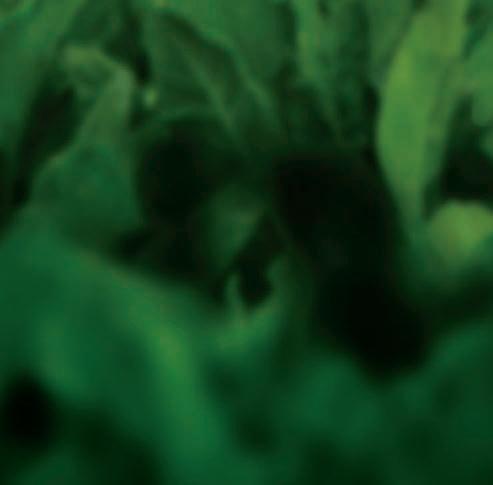



Remove grass weed competition in a wide range of forage crops and allow them to thrive. A combination of SeQuence ® and Bonza Gold ® will control over 20 grass weeds.



Contact your local Rural Supplier or Nufarm Territory Manager today for more information or visit us at nufarm.co.nz/sequence

ONF207188NF
®Sequence is a registered trademark of Nufarm Australia Limited. ®Bonza Gold is a registered trademark of Nufarm Limited.
11

















NZC_SF_Advert380x262outlines.indd 1 8/11/22 5:06 PM 12
Growers urged to use seed costs calculator
Annette Scott NEWS Seeds

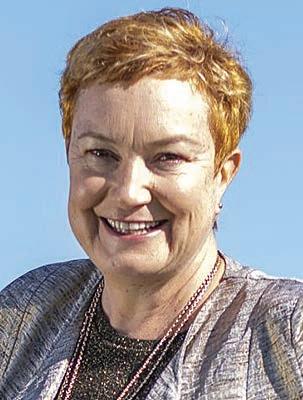

RAMPANT inflation and static pricing on the back of a poor harvest have seen growers move away from herbage seed production as others question its long-term viability.




But despite headwinds in international markets, the scene is set for change. With seed firms poised to release next year’s contract offerings, Federated Farmers is encouraging herbage seed growers to use its cost-ofproduction calculator.
Using the specifically designed calculator, growers can evaluate price and terms in relation to their own production costs.
Federated Farmers herbage seed subsection chair John McCaw said the spreadsheet, available on the Feds website, provides a valuable tool to compare the relative merit of seed production contracts from competing firms.
Feds worked with a group of growers to create the spreadsheet in response to concerns about a lack of profitability in the herbage seed industry.
Rather than simply demand a certain price for seed, Feds
was keen to work with industry to understand the true cost of production and quantify the extent of the problem.
In that, they have been highly successful, McCaw said.
The group held a roadshow, meeting individually with 11 seed companies to present and discuss the spreadsheet.
“In every case they were well received and the call for improved pricing and profitability was widely supported,” McCaw said.
He is cautiously optimistic.
“The industry has never been so united. We’ve had a series of similar conversations with all the major seed firms and we’re all on the same page.
“The scene is set for real change, but we face headwinds in international markets.”
Strong supply, particularly out of Denmark, combined with reduced demand due to sanctions against Russia and drought in China, has seen a correction in international pricing, while elevated freight cost and shipping
Zespri launches strategy to address climate change
ZESPRI has released a climate change strategy to help its industry deal with the impact of a more challenging growing environment, featuring dozens of actions required in coming years.
In launching the plan, Zespri’s industry and sustainability officer Carol Ward acknowledged the sector is already experiencing and responding to climate change, with growers adapting practices in response.
This includes greater use of totally enclosed orchard structures to offer hail protection, increased use of irrigation and the use of shelterbelts to dissipate higher winds. Meantime there is greater investment in the development of new cultivars capable of withstanding climatic changes.
Beyond the orchard gate the strategy has also incorporated transitional risks arising in post-harvest packing and marketing of kiwifruit in markets. These include market and regulatory changes including emissions pricing, environmental labelling, and changing consumer preferences.
Indications are the European Union will be considering a carbon-type tax on imports over time, possibly including food products.
“We know that beyond the physical impact climate change will have, we’ll also see changes at a regulatory level, along with a heightened expectation from our customers and consumers that we are adapting our approach,” Ward said.
The 40 current and future actions in the
plan include supporting growers to adopt climate-resilient practices like efficient water use, investing in climate-resilient cultivars and developing a future-focused climate research programme.
The strategy also aims to recognise climate impacts in industry planning, assessing the effects of climate change on productivity and profitability, and lessening exposure to carbon costs by reducing emissions.
This season the industry has already been hit hard by a late frost in early October, with estimates of crop losses ranging from 10% to 30% across the wider Western Bay of Plenty region. Last season Opotiki growers faced massive losses due to an unseasonably strong wind event.
In 2017 a NIWA report identified risks facing the sector in the Bay of Plenty, where 80% of New Zealand’s crop is grown.

Lead scientist Dr Andrew Tait said Green kiwifruit in the Te Puke district was expected to face steadily declining production levels, becoming marginal by 2050 and likely to be unviable by 2100.
Tait identified the decline in winter chilling as the main impact on productivity, with fewer nights under the required 10degC at critical times of the year.


At present the industry is partially countering the impact of warmer bud-break periods using hydrogen cyanamide, known as Hi-Cane.
However, the future of this treatment is uncertain, with the Environmental Protection Authority recommending a fiveyear phase-out period for the chemical’s use, with little indication of any suitable replacement available yet.
delays continue to erode NZ growers’ competitiveness.

Of particular concern are the high-volume international seed traders who dictate the price of commodity seed, trading on volume and margin with no consideration of cost of production.


“Put simply, international buyers will not pay what New Zealand growers need at this point,” McCaw said.
“NZ seed companies now face the difficult balancing act of increasing the grower price in line with industry expectations whilst not pricing NZ out of international seed markets.”
Meanwhile, the domestic proprietary market remains stable, returning relatively strong returns to seed companies and providing greater opportunity to address low grower returns.
However, McCaw warns increasing domestic proprietary prices too far will incentivise the grey market of uncertified overthe-fence seed trading to the detriment of the entire industry.
The message to growers is that there will be no quick fix.
The market will correct but it will do so in a number of steps rather than one leap.
“We expect a significant lift in pricing for next season but not in
Things are so far out of whack it’s going to take some time to unwind.
John McCaw Federated Farmers
line with what the spreadsheet indicates is required.
“Consecutive price increases and reduced input costs are needed to return strong profits.”
McCaw has confidence in seed merchants understanding that profitable growers are key to the success of their businesses.
“The current situation is unsustainable. Growers are hurting and our resolve is strong.
“We need to keep the pressure on but continue to work collaboratively with the seed companies.
“Unfortunately, things are so far out of whack it’s going to take some time to unwind.”
Growers should expect a considerable range in pricing and terms across firms and across cultivars for the 2024 harvest.
McCaw said the cost-ofproduction calculator is a powerful tool to unite growers and give them information they need to respond to these price signals and optimise their crop rotation.
Full training provided – earn while you learn. Call us on 0800 462 874 or visit www.gobus.co.nz/opportunities 13 FARMERS WEEKLY – farmersweekly.co.nz – December 5, 2022 News 13
BALANCING ACT: Feds herbage seed sub-section chair John McCaw says NZ seed companies face the di cult balancing act of increasing the grower price in line with industry expectations while not pricing NZ out of international seed markets.
Richard Rennie NEWS Climate Change
Carol Ward
Tough times ahead will ask much of sector
Hugh Stringleman NEWS Economy

THE latest KPMG Agribusiness Agenda focuses on growth and resilience during very difficult times for the food and fibre sector.
The agenda was released at the agriculture sector breakfast on the first day of the deferred Fieldays in Hamilton.

Global head of agribusiness for KPMG Ian Proudfoot expects the food and fibre sector to become a General Election 2023 campaign battleground given the existing tensions, particularly around climate change.
This risks entrenching divisions among farmers and growers and between rural and urban.
He said 2023 is looking like it will be a tough year economically as the world goes through a much more traditional demand-driven recession, which will be longer lasting than the initial supply-side shock because of the response to
the covid pandemic.
Food and fibre companies will have to adapt quickly to the effects of sustained recession on consumers’ purchasing.
Investments to support longterm growth and prosperity will be different from the yield and quality enhancements of the past.
Proudfoot spoke of the need to have infrastructure in place to secure and enhance the sector’s licence to operate with the environment, the local community and consumers around the world, and future-proof the value chains that align with the needs of the community and customers.
“If we fail to invest in our licence to operate and let it slowly erode over time, it will be close to impossible for future generations to restore this,” Proudfoot said.
The second chapter of the 2022 KPMG Agribusiness Agenda has case studies illustrating aspects of food and fibre sector growth and resilience.
The themes are: taking control of reconnecting with the world, accelerating towards the future
of work, capturing the unique opportunity in decarbonisation, collaborating substantively, bold steps now to benefit future generations, and a food system that works for all New Zealanders.
The final case study looks at Meat the Need, Feed Out and the New Zealand Food Network, with
its 60-100 foodbanks across the country.
Meat the Need co-founder Wayne Langford, also national vice-president of Federated Farmers, said the challenge is food insecurity across NZ, to be addressed by donations from farmers without creating new
systems and infrastructure.
“The pandemic really propelled us forward and forced us to look at how we could leverage existing supply chain infrastructure,” he said.
“Silver Fern Farms gratefully came on board, and they now pack and distribute all donated meat for us.”
Langford said changing the mindset in the sector would force accelerated innovation, tackling biodiversity loss and new product development.
KPMG co-author Ainslie Ballinger said changing mindsets would bring full understanding of the true value of growing and producing food – not just the economic cost and benefit, but the cost to nature, the benefit and cost to our health and wellbeing, and cultural and social benefits.
“Collaboration and partnership lie at the core of the food and fibre sector achieving new growth, while having the resilience to weather further shocks that are bound to come our way,” the KPMG report concludes.
Bill heads off building in ‘dumb places’
Annette Scott NEWS Politics

BUILDING and maintaining assets in “dumb places” at risk from climate change hazards should be about to change with the introduction of the Local Government Official Information and Meetings Amendment Bill.
Farm real estate listings surge as rural uncertainties spill over
by the trading banks are now emerging,” he said.
WIDESPREAD discontent in the rural sector has spilled over into the rural real estate market with a surge in farms being listed for sale.
Real Estate Institute of New Zealand (REINZ) rural spokesperson, Brian Peacocke, said reports indicate a high number of farms on the market.

This, along with a levelling-out in farm sales following a 53% fall the month before, indicates some concerning trends in the rural sector, he said.
“Just what is triggering this large surge of properties for sale is yet to play out,” he said.
“Tension in the farming ranks is palpable, discontent with central government policies is intense, frustration regarding inexorable cost increases is a dark cloud; and given the profits recently announced by the banking sector followed by spiralling interest rates, accusations of price-gouging
There is also a mood of caution in the sector given that marketrelated signals reflect an easing in price levels for beef, lamb and dairy products. This is sobering and food for reflection, he said.
“Land values will inevitably come under scrutiny, particularly for the range of properties other than those considered by virtue of location, contour and a high standard of improvements to be at the top end of the quality range.
“On the positive side, extended periods of rain over much of the country is providing great conditions for spring grass growth and crop emergence, which is really pleasing for those on the land.”
REINZ’s latest data for October showed farm sales were down by 97, or -35.9% for the three months ended October compared to the same period 12 months ago. Overall, there were 173 farm sales during those three months.
In the year to October, 1501 farms were sold, 284 fewer than
were sold in the year to October 2021, with dairy farm sales down 7.2%, dairy support blocks back 20.4%, 16.0% fewer grazing farms, 13.2% fewer finishing farms and the same number of arable farms sold over the same period.
The median price per hectare for all farms sold over the three months to October 2022 was $25,270 compared to $31,360 recorded for three months ended October 2021, a drop of -19.4%.
The median price per hectare increased by 9.8% compared to September 2022.
In the regions, ManawatūWhanganui and the West Coast recorded increases in sales, up by five and four sales respectively, while Waikato and Canterbury recorded the biggest decrease in sales, back by 21 sales each.
In comparison to the three months ended September 2022, six regions recorded an increase in sales with the most notable being Gisborne/Hawke’s Bay, Manawatū/ Whanganui and Southland, where three sales were recorded in each region.
The bill includes provisions that open the door to greatly improved information on natural hazards such as flood risk and coastal erosion for property owners and potential buyers. It specifically allows for projected climate impacts to be considered.
We have a real and ongoing problem with building and maintaining assets in dumb places that stand to cost many property owners and ratepayers dear as the impacts and costs of climate change continue to worsen.
Welcoming the bill, Insurance Council of New Zealand Te Kāhui Inihua o Aotearoa (ICNZ) chief executive Tim Grafton said:
“We have a real and ongoing problem with building and maintaining assets in dumb places that stand to cost many property owners and ratepayers dear as the impacts and costs of climate change continue to worsen.
“Clearer requirements for councils around the inclusion of natural hazard information on land information memorandums
and protection for them in providing that information are long overdue.
“Individuals, communities, councils and lenders all need to know the long-term hazard outlook when considering committing to long-term borrowing, investment and maintenance obligations.”
The outlook should cover at least the next 50 years when such information is available, he said.
In particular, Grafton said, lenders and borrowers should have access to, and look carefully at, all available hazard information when considering applying for, or writing, a mortgage.

Beyond the enhanced provision of hazard information, it is also long past time that councils do more to simply stop development in high hazard zones, particularly those identified around the coast and in known flood zones, Grafton said.
Local government is at the forefront of responding to climate impacts that already cost communities many hundreds of millions of dollars each year.
Beyond the monetary loss is the impact on community health and wellbeing, risks to life and safety, loss of amenity value and environmental and cultural loss.
“No matter how well current coastal, flood or landslip measures stand up to today’s climate-driven extreme weather events, we know to expect such events to get more frequent and their impacts and costs more severe,” Grafton said.
ICNZ said data to the end of the third quarter puts the running total for general insurance losses for extreme weather events in 2022 at $298 million. The 2021 full year total was $324 million.
14 FARMERS WEEKLY – farmersweekly.co.nz – December 5, 2022 News 14
ELECTION ISSUE: Global head of agribusiness for KPMG Ian Proudfoot says the food and fibre sector will become an election campaign battleground next year.
Gerald Piddock NEWS Real Estate
LISTINGS LIFT: Real Estate of New Zealand rural spokesperson Brian Peacocke says widespread discontent in the farming sector could be behind the rise in rural properties for sale.
NZ pressed to meet growing US beef hunger


 Scott MARKETS Beef
Scott MARKETS Beef
THE US will be in the market for more beef from global markets over the next three years as its own domestic production declines, according to a newly released Rabobank report.
But while New Zealand is among the major global beef exporters that could help fill the gap, its own supply constraints mean it will be challenged to find additional export volumes.
The report suggests given production constraints in many of the world’s beef-producing nations, international markets will struggle to meet the gap left by the US contraction, potentially leading to an increase in global beef prices and the redistribution of trade volumes.
In its Q4 Global Beef Quarterly, the specialist agribusiness bank says the reduction in the size of the US cattle herd is nothing new, but with numbers declining rather than building in recent years, it has to date not affected the amount of domestically produced beef reaching US consumers.
But that is expected to change, with the bank forecasting the tipping point will be reached in 2023 when US beef production should fall by 3%, with annual declines of 2%-5% possible into 2026.
On average, that is the potential loss of 400,000t to 500,000t of beef from the US production system per year during this period.
Behind this decline, the report’s lead author, Rabobank senior animal protein analyst Angus Gidley-Baird, says, is a natural cyclical reduction in cow numbers after the US herd peaked in 2019, compounded by the impacts of recent drought conditions and high feed costs.
The country’s retailers and restaurants are expected to look to the global market to fill this void.
The question is which beefexporting nations will fill the gap.

“While neighbours Mexico and Canada, the two largest suppliers of beef to the US, are likely to take up some slack, Canada is going through its own cattle herd liquidation phase and likely limited in what it can supply,” the report says.


“Australia and NZ, the thirdand fourth-largest US suppliers,
are the logical next options, but Australia’s recovery from its own beef cattle liquidation phase is being drawn out with some questions as to whether it will have the cattle available to produce the same volumes it has done in the past.”
NZ beef production is also expected to be limited with a forecast to decline 4% between 2023 and 2025, while Europe, not a big supplier of beef to the US anyway, is set to continue to record a structural decline in production over that period.
“This leaves South America, which has volume, but lacks the trade access needed to fill the sizeable gap in US production.
“Brazil’s production is forecast to grow over the coming years, but we expect production in Argentina to decline then plateau.
“In combination, these two major South American exporters will not increase production enough to offset the drop in the US, even if trade arrangements are changed to increase exportable volumes from South America,” Gidley-Baird says. For NZ, the report says, the total beef kill for the 2022 season was 5.2% behind the previous season with fewer
steers, heifers and cows processed.
“Ongoing delays have contributed to the lower slaughter numbers with labour shortages and unfavourable weather conditions the main contributing factors.

“Processors are currently experiencing increased pressure for space due to the wet, cold winter delaying cattle finishing which has caused a lag effect,” report co-author agricultural analyst Genevieve Steven says.
“The industry is hoping that summer weather conditions are favourable as the sector could face a significant headache if regions start to dry out and processing
capacity remains tight.”
Steven says consumer demand for NZ beef is being impacted by cost-of-living challenges across the globe and this is likely to flow though to weaker pricing over coming months.
Processor backlogs, logistics challenges, and weaker demand for beef are all likely to contribute to some of the heat coming out of the farmgate beef schedule.
Rabobank anticipates the farmgate schedule will soften through quarter four, moving below 2021 pricing levels, but remaining above the five-year average price.
WHAT DOES YOUR FARM’S ESG JOURNEY LOOK LIKE?
GROWING
“We really seeourselves ascustodianstothefarm… ESG is a long-term journey and it’scriticaltoestablish a long-term partnership with atrusted business adviser.” Jasper Holdsworth, Paringahau Station, Gisborne.
From planting out water ways and registering forest into the ETS, to calculating their on-farm emissions and developing a succession plan, Jasper and the Holdsworth family are on a long-term journey with their environmental, social and governance responsibilities.
What’s the next step on your ESG journey?

IDEAS
SCAN THE QR CODE OR VISIT BDO.NZ/ESGINAGRI BDO AGRIBUSINESS
BDO New Zealand Limited, a New Zealand limited liability company, is a member of BDO International Limited, a UK company limited by guarantee, and forms part of the international BDO network of independent member firms. BDO New Zealand is a national association of independent member firms which operate as separate legal entities. WATCH THE PARINGAHAU STATION STORY
| PEOPLE | TRUST
LONG-TERM RELATIONSHIPS WITH THE LAND AND ITS PEOPLE
15 FARMERS WEEKLY – farmersweekly.co.nz – December 5, 2022 News 15
Annette
ON THE MOVE: Rabobank agricultural analyst Genevieve Steven expects the farmgate beef schedule will move below 2021 pricing levels, but still remain above the five-year average price.
Tough winter hits dairy submission rates
Gerald Piddock NEWS Dairy
SUBMISSION rates among New Zealand’s dairy herd are down across the country after the cold, wet winter caused farmers to struggle to get cows in optimum condition for mating.

The seasonal difficulties meant farmers were unable to build adequate pasture covers on their farms. This, along with the high cost of supplementary feed, meant many cows went into mating below condition.
LIC general manager of NZ markets Malcolm Ellis said most farms are now through three weeks of mating and as of mid-November, data showed submission rates are 1.8% down nationwide.
Earlier data showed rates were down 2.4%.
Ellis said the 2.4% rate was substantial because generally there is little material difference in submission rates year on year.
“It might be up or down 0.5%.
“It’s significant and the biggest annual hit I have seen.”
He believed that rates shortening up to 1.8% is indicative of later cycling activity and the use of synchrony by farmers.
“At -1.8%. that’s still a material impact on submission rates.”
He said the early season milk production data, which was back in nearly every region except Southland, was a fair indication of what was to come once mating begun.
Early indications are that this will impact non-return rates and it appears that this will be back this season too.
“That’s logical because if the conditions on farm are negatively impacting submission rates, it is likely that there is a negative
If you look across the country, the weather over the winter – it’s been one of the wettest, coldest and I think what we have seen is that there was simply not a lot of high-quality feed available.
James Smallwood CRV
impact on those that are cycling and being mated.”
He predicted a -1% or -2% reduction in six-week in-calf rates nationally, which will transpire to a 0.5-1% increase in empty rates.
CRV managing director James Smallwood confirmed that submission rates are back in all regions except for Southland.
“But if you look across the country, the weather over the winter – it’s been one of the wettest, coldest, and I think what we have seen is that there was simply not a lot of high-quality feed available.”
Smallwood said it had led to some choosing to use CIDR
Government told not to fix unbroken NZUs
Richard Rennie MARKETS Emissions
GOVERNMENT proposals to make NZ Units a financial instrument are being challenged by carbon traders as attempts to try to fix a problem that does not exist in the trading market.
NZ Units, or NZUs, represent one metric tonne of carbon dioxide or equivalent greenhouse gas from industries covered by the Emissions Trading Scheme (ETS), and are traded on the ETS market.
The government is seeking consultation from industry on its proposals to effectively legislate the units’ sale through financial regulation, similar to that used in other financial instruments such as derivatives and bonds.
The move, which aims to increase transparency in transactions, will require market operators to be licensed as financial operators.

But Lizzie Chambers, founder, and director of NZU trading company Carbon Match, said she is unsure about what problem the government is trying to address in a market that has been operating smoothly for over a decade.
“It appears they [the government] want to potentially build some sort of central platform. Yet most of the market’s functionality is already there, three times over,” Chambers said.
Classifying NZUs as financial instruments will bring another layer of compliance and regulation that she sees affecting many everyday operators simply seeking out a spot purchase of NZUs either for offsetting, or through forestry operations.
“So, the risk is that for those operators you remove pathways to market for those operating in the ‘retail’ aspects of unit sales.”
She said as soon as an NZU owner starts to use the units in a way not intended, such as for debt security or financing, they become
subject to financial rules already in play.
Given that the NZUs were issued by the government and endorsed and vetted by the Ministry for Primary Industries, and have been sold across a relatively small market uneventfully for a number of years, the move seems over the top, she said.
However, Chambers said there could be some value in changing NZU reporting regulations to require sales data to be presented in a real time as traded updates, similar to what the likes of stock exchanges use.
“That could be the motivation for this review, but you could do that without having to go and re-invent the whole exchange.
“You just need to require operators to disclose more frequently.”
The consultation period was also of concern, given its short window between now and December 15, with submissions accepted until Christmas Eve.
strategically on their cows to try to get them in-calf.
He said the challenging conditions along with the high milk payout and lift in input prices have seen farmers becoming more discerning with their genetics.
“I would like to see genetics get onto the balance sheet and not the profit and loss statement because what you’re trying to do is create that asset that’s underpinning your business going into the future, and I think now because the tools are there – particularly with the likes of sexed semen – you can be deliberate and underwrite that and say, ‘That is the animal I want’.”
Smallwood said demand for
sexed semen has tripled.
Likewise, Ellis said demand for sexed semen from LIC’s clients has grown by 90,000-100,000 inseminations this season.
“Sexed semen went from 17,00033,000 to 110,000-208,000 and now it’s looking like 295,000.”
Smallwood said if the dairy industry is going to achieve productivity gains while reducing its carbon footprint, it has to be more selective and identify its best cows and make sure it mates those to the best bulls.
The national dairy herd’s rate of genetic gain could be lifted significantly if farmers could get their replacement cows from the top third of their cows and mate those with the best bulls.
As for the remaining herd, if the farmer chooses to use beef genetics, the resulting calf has to be robust. Research shows there are genetics available that meet the requirements of beef finishers, he said.
Ellis said the fluctuations around the dairy-beef market mean some farmers are also looking to shortgestation genetics rather than beef genetics, to earn money from the extra days in milk rather than take a risk with a dairy-beef calf.
Those dairy farmers who do use beef genetics often change their preferred sire year on year. This season there was a significant lift in demand for Charolais sires with straw sales lifting from 45,000 to 85,000, he said.


“They are citing Charolais as a desirable breed because it’s respectable for calving ease, gestation length, it has good growth characteristics and most importantly the marker – a Charolais calf can be easily identified in a pen of calves.”
Nigel Brunel, head of commodities at Jarden, said his company is also taking an “if it ain’t broke don’t fix it” view on government efforts to turn NZUs into financial instruments.
“However, if they insist on making them a financial product then we would want them to use existing regulations and regulate through the Financial Markets Authority, rather than
create an entire new one.”
He also said the four-week timeline for consultation, coming after two years of discussion and signalling by the government, is far too tight for such a significant shift.
A Forest Owners Association spokesperson said the association is taking a wait-and-see approach to any regulations the government might adopt.
16 FARMERS WEEKLY – farmersweekly.co.nz – December 5, 2022 News 16
NOT OPTIMAL: The tough winter conditions meant many dairy cows came into mating below condition, causing a drop in submission rates.
DOUBLING UP: Lizzie Chambers says government plans to turn NZUs into financial instruments will create unnecessary complexity for spot and retail trades in the ETS units.
‘Smarter funding needed to save local government’
Richard Rennie POLITICS Governance
LOCAL authorities risk becoming unsustainable in coming years unless smarter solutions are developed to help them meet the massive infrastructure and climate change costs they face.
So says an independent review report on New Zealand local government, which highlights the problems and presents some solutions for restructuring funding. The report is open to submissions until late February.

Associate Minister for Local Government Kieran McAnulty welcomed the report. The last major review and shakeup of local government occurred in the late 1980s, with multiple amalgamations and the formation of some unitary authorities.
But McAnulty said amalgamation was not a given from this report – though it could become one if no changes are made and some councils continue to “limp along” until amalgamation becomes inevitable.
“This is an effort to be frontfooting that future. Finding out what their issues are,” he said.
NZ has 78 council bodies
including 61 district councils, 11 regional councils and six unitary authorities.

The report pulls no punches, citing issues with local government often sheeted back to central government decrees on policy direction.
It calls for more genuine localcentral government partnerships, demanding a “fundamental reset” of trust between the two.
“What I heard from my tour around councils is they welcome the opportunity to have as much of a local focus as possible. But there is a balance to strike, you need to ensure the council’s funding structure is adequate to do that,” the minister said.
The report’s authors say that over the years councils have faced increased “unfunded mandates” from central government policy, with councils bearing the cost of enforcing the policies.
The expectations are accompanied by high-cost demands on councils, with capital costs to improve infrastructure expected to exceed $50 billion over multiple generations in coming years.
Over the past 70 years local government’s share of tax revenue has remained at about 2% of GDP, while central government’s share
has almost doubled to 40% in 40 years.
There is a distinct disconnect between central government’s view on what is “good for NZ”, versus councils’ view on what is “good for the community”.
The resulting relationships have been described as “ad hoc, misaligned and low trust”.
Compounding problems for many councils are static or declining rating bases, putting the traditional rating revenue model in peril.
The report says simplification is necessary, alongside the development of other funding sources. Models could include road congestion charges, bed taxes, more targeted rates, volumetric charging for water and the raising of bonds to fund specific infrastructure projects.
The Provincial Growth Fund created by former minister Shane Jones was cited as an example of a successful funding model that has even greater potential.
The fund injected $1b a year over three years into provincial projects identified by local councils.
The report’s authors suggest it could also be applied for larger population centres.
McAnulty acknowledged the funding challenges, saying
alternatives are essential to avoid another wave of amalgamation.

The charging of GST on rates, described as a “tax on a tax” that generates about $1b a year in income, could also provide a funding source for helping councils deal with climate change responses.
The report says insurance companies are already starting to challenge the insurability of some regions’ properties, noting that funding tends to move from crisis to crisis. There is a need for a large fund to enable proactive changes, it says, and it must have ongoing and enduring political support
through election cycles.
Meantime, getting the central government to pay rates on property it owns could also provide more local council income.
McAnulty said the government is open to any ideas on funding, including the option of channelling rating GST income to a response fund.
“The changes that come from the review will need to be led by the local sector. We will not be recommending amalgamation. It is up to districts, whereas in 1989 it was forced, and it has taken nearly 30 years to adjust to that,” said McAnulty.
Mayor sees value in getting central govt to face rates bill
Richard Rennie POLITICS Governance
ASHBURTON District mayor Neil Brown says he can see some positives in the local government review report, including enabling councils to collect rates on central government property in their district.
This was one of the key recommendations made by the independent review.
It noted successive reviews have also recommended this change, but central government
has yet to implement it.
The review panel strongly recommends it happen as a signal of good faith that the central government-local government relationship is changing.
He also agreed with Local Government NZ’s view that there should not be any GST charged on council rates.
Estimates are that about $1 billion a year is earned by central government in what amounts to a tax upon a tax.
“It could be a case either that is not charged, or that money gets paid back to councils. It would
be six of one, half a dozen of the other,” he said.
The review also identifies the impending costs of climate change and includes a recommendation for a fund local councils can call upon to help with mitigation, rather than seeking funding to repair after an event occurs.
The massive flood event that hit Ashburton district last June left the district with a $5m bill on roading repairs, with Waka Kotahi picking up about 70% of that.
This was followed by a further $2m of damage, which the council itself funded.
“But funds are woefully short of where they need to be and it is not just Ashburton, it is NZ wide. There is a huge funding shortfall there,” Brown said.


He said councils have sought a review of roading funding by Waka Kotahi but there has been no progress on that yet.
He estimated Ashburton has about 75% of the funding it needs, sitting at $16m a year when it needs to be $20m just to keep up with repairs and maintenance.
Meantime the state highway bridge at Ashburton continues to face delays in replacement after
being severely damaged by last June’s storm.
Original estimates of $40m have ballooned to $113m, leaving the council seeking support from the government’s Community Capability and Resilience Fund.
The report also recommends encouraging council bond raising for projects.
Brown said this may be a good idea for some councils that are already at their debt ceilings, but Ashburton can continue to comfortably borrow to source funds via the NZ Local Government Funding Agency.
REGISTRATIONS ARE OPEN FOR THE 2023 RURAL LEADERS AGRIBUSINESS SUMMIT.
The 2023 Rural Leaders Agribusiness Summit ‘Forefront’ is a one-day, industry forum. It features speakers, panels, discussion and debate on real solutions to our toughest agribusiness challenges. 27 March, 2023, Christchurch Town Hall. Earlybird rate $395+GST. (valid until 31 Jan 2023).
17 FARMERS WEEKLY – farmersweekly.co.nz – December 5, 2022 News 17
Summit Dinner $130+GST. Learn more or book at ruralleaders.co.nz/forefront/
OPENMINDED: Kieran McAnulty says the government is open to the options presented in the report.
Educational resources for schools & students





The big issue
How will a reset of the Chinese economy impact NZ exports?
For the first time in 30 years China’s economic growth
What percentage of NZ’s total exports went to China in 2021?
What are three factors affecting the Chinese market?
How much have Chinese property sales fallen in the year to August? What does this demonstrate?
What’s happening with milk prices?
Currrency figures affect milk prices. bit.ly/nzx-milk-forecast Have a go:
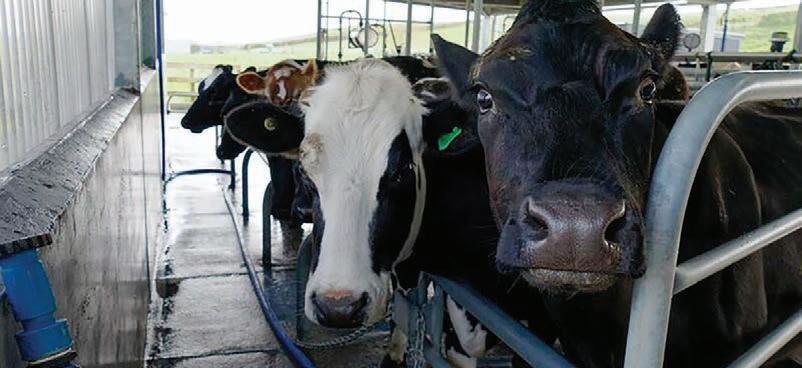
What was the NZX forecast milk price at the end of November?

Why does the NZD:USD currency figures affect milk prices?
What is the Black Sea grain corridor?
shortages have been an issue for a while now. How do you think this impacts farmgate values?
Ag&Ed Volume 134 – December 5, 2022
Have a listen In the news
Analyse this
Read, listen to and watch what is happening in New Zealand agriculture by scanning the QR codes or following the links. Answer the questions to complete the exercises. What challenges are there for our green pastures? NZ Scientists look at the priorities to achieve a lowfootprint, high value food producing future. bit.ly/beeflambnz-greener-pastures Have a go: 1. Do some research. What is the NZ Grassland Association? 2. There have been increasing cases of newly sown pastures failing within one to two years. Why do you think ‘pasture persistence’ is important? 3. New Zealand is known for its pasture based systems compared to other countries. Why is this a benefit for NZ farmers? 4. What factors might be impacting pasture persistence?
Proudly sponsored by
1.
2.
3.
could be surpassed by that of other Asian countries. farmersweekly.co.nz/even-as-it-slows-china-key-to-nz-sales/ Have a go:
do this season’s NI lamb prices compare?
1. How
lamb slaughter
2. Did lamb values
3. Looking
4. It
5.
Source: AgriHQ 7.0 7.5 8.0 8.5 9.0 9.5 10.0 26-Aug 26-Oct 26-Dec 26-Feb 5-yr Ave Last Year This Year North Island lamb slaughter price ($/kg) 18
1.
2.
3.
How
Have a go:
do
values in November this year compare to last November levels?
peak earlier or later this season compared to last year?
at last year and the five-year average, what do prices typically do from here on? Stretch yourself:
has been reported that lambs have been slower to reach finishing weight due to the delayed start to spring. Why is good weather important for lamb growth?
Staff
Native shrubs giving refuge?
Native shrubs giving refuge?
Native shrubs can be a good option for hill country farms. bit.ly/beeflambnz-aginnovation
Native shrubs can be a good option for hill country farms. bit.ly/beeflambnz-aginnovation
Have a go: 1. What are some different types of woody vegetation? 2. Name some common native shrubs
Have a go: 1. What are some different types of woody vegetation? 2. Name some common native shrubs
Stretch yourself: 3. How does woody vegetation support hill country?
What are some potential benefits of planting native vegetation on hill country?
Stretch yourself: 3. How does woody vegetation support hill country? 4. What are some potential benefits of planting native vegetation on hill country?
What are some potential issues? 6. From a fiscal perspective how does native vegetation stack up against exotic options (pine trees)? 7. In your opinion are there enough other benefits to outweigh the large costs associated with planting natives? 8. What is the ME (metabolisable energy) of native shrubs compared to pasture? Would it be suitable as a grazing option? If so, under what conditions?
What does a dairy farm assistant’s job entail?

Farm assistant jobs are an entry level position that gives workers a good base for future roles
Farm assistant jobs are an entry level position that gives workers




dairynz.co.nz/people/recruitment/roles/farm-assistant/ Have a go:
1. Do you need a qualification to become a dairy farm assistant? 2. What are some attributes that would be valued by a potential employer?
dairynz.co.nz/people/recruitment/roles/farm-assistant/ Have a go: 1. Do you need a qualification to become a dairy farm assistant? 2. What are some attributes that would be valued by a potential employer?
Stretch yourself: 3. What is a dairy assistant’s role when milking? 4. What are some of the animal handling and general skills that will be learnt in this role? 5. What are seven other skills that would be learnt on the job in this role? 6. Though formal qualifications are not necessarily required for this role, what options are available if you did want to get qualifications? Who provides these?
Stretch yourself: 3. What is a dairy assistant’s role when milking? 4. What are some of the animal handling and general skills that will be learnt in this role? 5. What are seven other skills that would be learnt on the job in this role? 6. Though formal qualifications are not necessarily required for this role, what options are available if you did want to get qualifications? Who provides these?
What is ewe wastage?

What is ewe wastage?
Massey University and Lincoln University have carried out a collaborative study to describe ewe wastage on NZ sheep farms. bit.ly/beeflambnz-ewe-wastage

Massey University and Lincoln University have carried out a collaborative study to describe ewe wastage on NZ sheep farms. bit.ly/beeflambnz-ewe-wastage
UP TO THIS RESOURCE

Have a go:
Explain what ewe wastage is?
Have a go: 1. Explain what ewe wastage is? 2. How many of the farms studied were in the North Island? How many were in the South Island?
How many of the farms studied were in the North Island? How many were in the South Island? Stretch yourself:
What were some common reasons for culling ewes?
What was the variance of replacement rates across the study? What do you think would be an ideal replacement rate?
Stretch yourself: 3. What were some common reasons for culling ewes? 4. What was the variance of replacement rates across the study? What do you think would be an ideal replacement rate? 5. Why are these studies valuable?
Why are these studies valuable?
Proudly sponsored by
SIGN
Are you a parent or teacher and want to receive this educational resource every week? Send us an email to sign up at aganded@agrihq.co.nz
5.
6.
7.
8.
4.
What are some potential issues?
From a fiscal perspective how does native vegetation stack up against exotic options (pine trees)?
In your opinion are there enough other benefits to outweigh the large costs associated with planting natives?
What is the ME (metabolisable energy) of native shrubs compared to pasture? Would it be suitable as a grazing option? If so, under what conditions?
2.
5.
Watch this Did you know? Did you know? SIGN UP TO THIS RESOURCE Are you a parent or teacher and want to receive this educational resource every week? Send us an email to sign up at aganded@agrihq.co.nz Proudly sponsored by summer Jump into a job in the sheds this & earn $$$ Take the first steps with easy to watch online Agricademy courses, and gain the skills you'll need in crutching or relief milking, to help you step into a job in the sheds this summer. Get more information at agricademy.co.nz
1.
3.
4.
What does a dairy farm assistant’s job entail?
roles
a good base for future
5.
19 FARMERS WEEKLY – farmersweekly.co.nz – December 5, 2022 Ag&Ed 19
A missed opportunity
Neal Wallace Senior reporter
HEN historians reflect on the achievements of the Jacinda Ardern-led governments, they will likely view favourably her leadership during the covid pandemic, White Island volcano eruption and Christchurch mosque attack.
They will be less complimentary about her governments’ ability to deliver on policies.
That list is long.
And as historians delve into the minutiae of her administration and the areas of poor performance, the words He Waka Eke Noa (HWEN) are unlikely to be there, crowded out by health, education, crime and immigration, among others.
They should be a focus.
A system to make farmers pay for their greenhouse gas emissions was never going to be welcomed, but the way it was handled by the government has made that challenge doubly difficult.


Faced with the unpalatable choice of being included in the Emissions Trading Scheme (ETS) or developing their own scheme, primary sector groups chose the latter.
The argument that they should have rejected outright the imposition of a greenhouse gas levy or tax is irrelevant.
The government had the numbers to include the sector in the ETS and it would have.
It was a significant feat for 11 disparate sectors to agree on an alternative pricing system.


There may have been elements of the HWEN document that required tweaking or that the government did not like, but had it been more receptive to what was proposed, it would have deflected much of the subsequent anger and criticism.
It was presented with the perfect deflection to what was emerging as – and subsequently became – a flashpoint for pent-up anger and frustration over multiple issues.
Despite claims by Agriculture Minister Damien O’Connor to the contrary, the government’s response to HWEN differed significantly from the original document.
And it was met with noticeably more hostile and defiant language from the HWEN partners, who variously described the government’s proposal as “unacceptable” and “unworkable”.
If the positions of the two parties were close, why have primary sector groups responded with a new wish list that includes
a phased-in period for pricing, a new tool to calculate methane and a request to revisit 2050 methane targets?
The subsequent anger and hostility were accentuated by the no-show of politicians or officials to explain the government’s response to HWEN during the incredibly short six-week consultation period.
Letters of the week Divided we fall
George Fox
Sheep and beef farmer, North Canterbury
IN DECEMBER 1944, Hitler’s push through the Western Front in the Ardennes offensive, known as the Battle of the Bulge, proved to be fatal for the Axis powers. Clearly underestimating the Allied forces’ strength, Hitler had divided his already dwindling troops between facing the Western Allied forces spearheaded by the British and Americans, and the Eastern front conflict with Stalin’s Red Army.
Comparing farmers to the Axis powers is possibly something that only happens in the Beehive these days, but my point is that Hitler divided his army, thereby weakening his forces to the point of imminent surrender.
Divided we are weak, and divided we are. The government’s reply to the He Waka Eke Noa (HWEN) proposal is completely ridiculous, but whether you believe in the need for us farmers to change our behavior by pricing emissions or not, this isn’t going away. The only chance of achieving a desirable outcome on agricultural emissions lies in presenting a united front, an allied force.
Nearly all farmers share the same frustrations, we just have different ways of dealing with these. There is no right or wrong way. Taking a constructive approach can be seen as siding with the government while others just simply say “No”.
To what end does saying no bring us? Surely it is better to have a seat at the table than be completely locked out and left banging on the door while the decisions are being made? If HWEN achieves a fair outcome for farmers, it sets a precedent for a future consultation pathway that has been lacking in so many previous processes.
It was unfairly left to sector leaders to try to explain the various scenarios and to try to appease angry farmers.
News this week that the government has backed down on one contentious aspect of its response – the categories of vegetation recognised as sequestering greenhouse gases – will be welcomed.

But why now? Why wasn’t this included in its initial response?
A Labour Government is only ever going to get muted support from rural NZ, and whether this is a factor in its approach to HWEN is an interesting question.
One thing is certain: the government’s handling of this situation has only made it tougher on itself.
We must put our differences aside and use a collaborative approach to find solutions to these issues. Divided, we risk unchecked legislation and red tape flowing swiftly through our sector with ourselves unable to unite to stand strong against it, all while our industry suffers decay from the inside out.
As Winston Churchill said, “Courage is what it takes to stand up and speak; courage is also what it takes to sit down and listen.”
20 Editorial
From the Editor
Best letter WINS a quality hiking knife Send your letter to the Editor at Farmers Weekly P.0. Box 529, Feilding or email us at farmers.weekly@agrihq.co.nz FARMERS WEEKLY – farmersweekly.co.nz – December 5, 2022 Opinion 20
WSubscribe on YouTube Meet the people behind the farm gate On Farm Story is a celebration of farmers and farming - told in under five minutes. A system to make farmers pay for their greenhouse gas emissions was never going to be welcomed, but the way it was handled by the government has made that challenge doubly difficult.
THE WEEK
LETTER OF
In my view ... Farm systems belong at heart of GHG policy



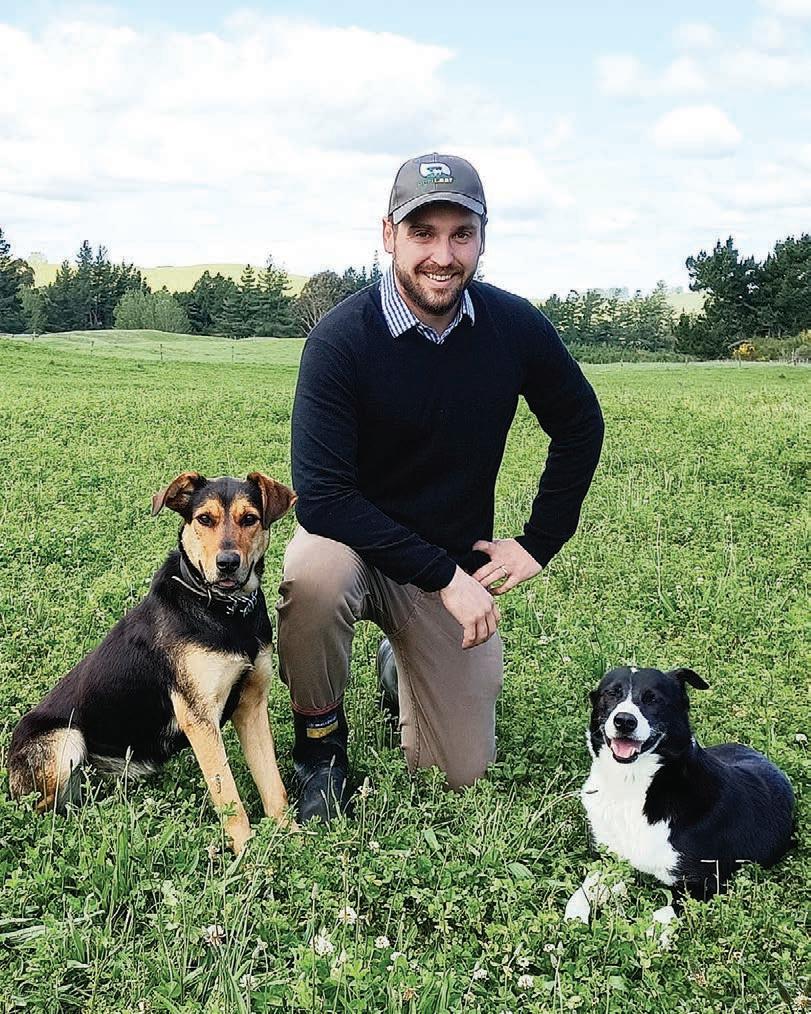
to get their crops in the ground.
Calling it “automation” because Beef + Lamb, Federated Farmers and Dairy NZ gave some response recommendations beggars belief.
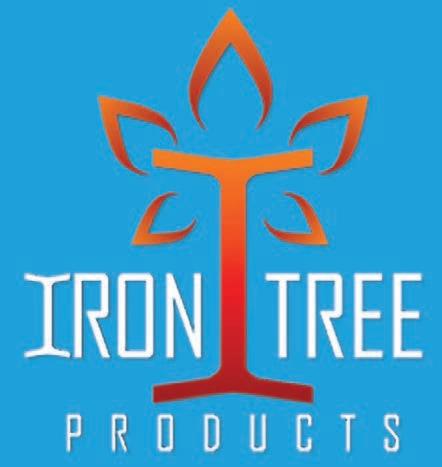
IT IS deeply irritating to read Farmers Weekly’s characterisation of 84% of submissions on the issue of pricing agricultural emissions as “automated” submissions, in “O’Connor blames farmer anger on misinformation” (November 28).
This was because they were submitted through websites other than the official government website. They do not even fit the definition of automation when they were submitted by farmers, not automatic equipment. These were farmers who had one month to read a 94-page policy proposal and 105-page impact scenario document, then respond to 16 long-form questions in the middle of mating, docking, AB, unpredictable weather and trying
I would also like to challenge Agricultural Minister Damien O’Connor’s assertion about misinformation causing farmer anger. Does he really believe more anger was generated by a misunderstanding around riparian planting offsets, or a government proposal that forecast a 20% reduction in profitability forecast for sheep meat production, with 133% emissions leakage?


The key problem is not “misinformation” for the agricultural emissions pricing structure, it is the target.
As is well understood by climate scientists, the agricultural system’s carbon cycle is neutral but the cycle itself is not neutral with respect to global warming.
Methane has a disproportionate greenhouse gas impact due to its
activity in the atmosphere – 80 times higher over 20 years than CO2.

However, a farm system that has maintained the same output of greenhouse gas over 12 years will have methane emissions, but a net-zero warming effect as the emissions are equal and methane is broken down in the atmosphere at the same rate that it is generated. Any reduction in emissions achieved below this level is a net negative for global temperature, which is the end goal of emissions measurements and pricing.
So what would a target designed with this in mind look like? In 2020 New Zealand agriculture emitted 39.426 million tonnes of CO2-equivalent greenhouse gases. Compared to the 33.793mtCO2eq emitted in 1990, our agricultural emissions have risen 16.6%. As 1990 is the earliest measurement we have to work with we could use that as an achievable baseline. New Zealand’s target would be 33.793mtCO2eq/year agricultural greenhouse gases.
Using the 1990 value would not apply significant financial pressure, or rely on the industry having access to hypothetical technology across NZ in seven
years. Under the scenario of a 1990 emissions target, additional emissions savings could be achieved if and when technology is made available that could allow NZ agriculture to achieve more than the target, with a possible financial incentive attached. This would be a system with both carrot and stick, with those achieving more sequestration or emissions reduction receiving additional value for their reduction in GHG output.

The problem is not currently with misinformation, it is with politicians who accuse those who disagree with their policy prescriptions as not taking global warming seriously enough. The truth is the opposite. This needs to be taken far more seriously than it is currently by those politicians. NZ’s agricultural emissions pricing will be a world first and needs to succeed if this is the only way to save the planet. If we actually took global warming seriously there are several things that we cannot get wrong:
• The policy has to be workable: If it pushes farmers off their land rather than drives adaptation and technological development it will be considered a policy failure
internationally, and will be the international case study of “Why we should not price agricultural emissions – NZ 2025”.
• The policy cannot have massive emissions leakage: Global warming is a global problem. High emissions leakage means the policy will a detrimental impact on NZ, and a muted effect on global temperatures.

• The policy must recognise all avenues a system can use to reduce methane emissions: It is inappropriate to say, as O’Connor recently did, that “these systems must not require more effort to measure sequestration than it is worth”. It is the farmer who decides what is worth his time and money. This sounds like Minister O’Connor telling farmers they are guilty until they prove themselves innocent, and then telling farmers they cannot provide types of evidence to defend themselves because it will cost them too much in legal fees. We would be in a far safer place with regards to GHG policy if the government took agricultural emissions seriously enough to take the recommendations of farm systems experts like those in He Waka Eke Noa more seriously, and the farm system illiterates of the Climate Change Commission a bit less seriously.
I personally wouldn’t trust the Beehive with appropriately legislating apiculture, let alone agriculture, at this point in time.
0105428 265.02x70 Serious Incinerators - Pulpit page Phone 021 047 9299 • www.irontreeproducts.co.nz Scraper Attachment for leaf blower Spark arrestor & ash guard LK0112755© SERIOUS INCINERATORS • Heavy duty • Long lasting incinerators Three sizes available. Options include: 21 InMyView
Lachlan Paine
Director of AgriLeaf and an agribusiness consultant, writing in his personal capacity
Contact us and
06 323 1519
Got a view on some aspect of farming you would like to get across? We offer readers the chance to have their say.
have yours. farmers.weekly@agrihq.co.nz Phone
BREAKING GROUND: Lachlan Paine says NZ’s agricultural emissions pricing will be a world first and needs to succeed if this is the only way to save the planet.
FARMERS WEEKLY – farmersweekly.co.nz – December 5, 2022 Opinion 21
BEE STING: Lachlan Paine says policymakers should take farm systems experts more seriously – and pay less mind to the denizens of the Beehive in Wellington, who he ‘wouldn’t trust with appropriately legislating apiculture, let alone agriculture, at this point in time’.
The problem is not currently with misinformation, it is with politicians who accuse those who disagree with their policy prescriptions of not taking global warming seriously enough.
Consents will forever be caught in the act
Alternative view
than building consents.
The playing with the RMA over the decades has just made it more cumbersome. It does need fixing. I’m not convinced that the three new pieces of legislation will achieve that.
building houses while totally ignoring the productive rural sector.
Emerson Semi-retired Wairarapa farmer and businessman: dath.emerson@gmail.com

ICAN remember back to 1991 when the Resource Management Act came into force. It was initially drawn up by the Labour Government and then passed by National, who made few changes so the initial legislation enjoyed bipartisan support.
Various governments have since played with it to get to the complete shambles we’re currently enjoying.
We are about to have new legislation and can read how that will, according to the government, cut costs by up to $150 million a year and shorten the time to get building consents.
The issue I have is that the child of the RMA will still be overly complex after a transition time of 10 years, which is a long wait for shortened building consents. The RMA should also be much more
It is also just another example of the current government’s strategy of centralising everything it can. In this case we’re going to go from 100 RMA plans to just 15 regional development plans created by regional planning committees. These committees will have six members, of whom two will represent iwi and one will be from central government. So in the shades of Three Waters, we’re going to have a lessening of local elected control. Instead, that control will be given to iwi and central government.
In addition and, I’d suggest unsurprisingly, the Ministry for the Environment told me that the proposed legislation would “allow for a stronger, more consistent national policy direction”.
They then appeared to contradict themselves by saying “the reforms would make room for a regional and collaborative approach to planning along with a more consistent national direction”.
I fail to see how you can marry the two.
There’s also the issue of water.
Federated Farmers environment spokesperson Mark Hooper said the rules governing water came out of nowhere. They hadn’t appeared in any of the earlier drafts, which were cause for concern. I share his concerns.
In fact the reaction to the announcement has been all about
The original headline was that the RMA “overhaul aims for faster, cheaper, better builds”. That was followed by another headline, “Industry welcomes RMA reforms”. Again, no one considered agriculture.
My view is that the exercise is a complete and utter shambles. As I’ve said, both political parties have played with the act since its inception with little happening. The National Government did change the legislation in 1993, which encouraged the leaky building syndrome costing $11.3 billion.
Now we’ve had five years to produce two bills of 850 pages. The entire RMA was 900.

Nothing is going to happen for another five years with the entire legislation not being enacted for 10. Why? How much time does it take to simplify complex legislation? Why will builders have to wait for five years to have speedier consents?
There’s a ridiculously short timeline for councils and others to submit on the legislation by January 30. With new councils and the Christmas break, combined with the complexity of the legislation, the government obviously doesn’t want meaningful input from anyone.
As nothing is going to happen for at least five years, why the rush?
Federated Farmers tell me the proposed legislation will make it harder for farmers to obtain resource consents. It’s an absolute
circus now, so a one-ring circus is about to become three.
There’s a proposed shift with environmental consent applications, from being effects based to being based on outcomes. Trying to get that process through an army of bureaucrats will be overly complex and largely removed from reality.
That begs the question as to whether the proposed legislation will be any simpler than the current RMA. I don’t believe it will. Will it be easier to use? No.
For example, we’re told that the RMA reforms will set up an organisation to ensure the Treaty is upheld. There will be a national monitor for Treaty rights and planning committees and courts will be instructed to “consider tikanga in their decisions”.
That won’t simplify anything.
That’s further complicated by National’s leader Christopher Luxon telling the country that he “can’t see” his party backing the plan. Asked what he would do in government, his reply involved
“stripping down” the legislation or “starting from scratch”.
Last week ACT released its alternative RMA, which looks good on first reading and will simplify the process especially as it concerns water.
With new councils and the Christmas break, combined with the complexity of the legislation, the government obviously doesn’t want meaningful input from anyone.
There will be two elections before any part of the act actually comes into effect and the odds would suggest National and ACT will win at least one.
That means that the chances of the proposed legislation actually achieving anything are nonexistent, which makes the entire exercise farcical.
Show the world how good farming can be
From the ridge
function to meet up with each other, and a National Ambassador is selected from among them to assist in promoting sustainable farming and growing.
I’d been aware of the awards and had been to a couple of functions in Manawatū to attend Horizon’s annual awards evening, so when the East Coast region joined the awards, Jane and I entered to support the concept and won the inaugural event in 2011.
I did three years of judging and then became the chair of this region.
was just 400km and a five-hour drive.
And it was well worth it as we toured around their property looking at the fenced-off and planted Motu River, their wetlands and the QEII trust blocks in the distance.
awards, those stories can’t be shared with the media and our urban cousins to give some balance to the stories that often portray us in a poorer light.
As chair, one of my roles is to cajole and bend the arms of farmers and growers to enter the awards so that we can run a competition. The usual refrain is that they are interested but not yet ready.
I point out that no one is ever going to finish improving the environment on their land as it is an ongoing process.
regional winners were introduced to the audience and videos of their impressive and inspiring properties were shown.
We saw sheep, beef, dairy, kiwifruit, forestry and carbon ventures across these different enterprises.
All of them rightly proud of what they had achieved.

ACOUPLE of weeks ago, I headed down to Christchurch for the New Zealand Farm Environment Trust’s National Sustainability Showcase.
This function is a culmination of events in the 11 regions who contribute to the Ballance Farm Environment Awards. The regional supreme winners attend the
The East Coast is unique as it incorporates two territorial authorities in the Hawkes Bay Regional Council and the Gisborne District Council.
And it’s big.
I live at the southern end near Takapau, and the region goes up to Hicks Bay on the East Cape some 500km from here and about a seven-hour drive.
When I drove up to the field day of our region’s winners, Mark and Jane Johnson, several weeks ago, I did think it could be worse as it
Not only were they doing the right thing by the environment, but their stock and farming business looked excellent.
The awards are designed to highlight wise and sustainable land use to encourage and inspire others, and provide good news stories about the terrific work that is being done out there in the primary sector.
Without people entering these
One of the attractions for those who do enter is that our judging teams are made up of farmers and rural professionals who, once the process is completed, provide a written report that includes suggestions and advice on how to improve. For nothing!
The NZ Farm Environment Trust is a charitable trust with the vision that this country’s food and fibre producers are recognised as global leaders in stewardship of land and water.
At the function, each of the 11
At the conclusion of the evening, the Everest family from Ashburton and their dairy and beef property were announced as the National Ambassadors for the year ahead. Judging is underway around the country now for next year’s awards, with the regional dinners and field days held during the autumn.
If you get the chance to attend these events, don’t miss the opportunity.
And if you are proud of what you are achieving on your land in terms of environmental outcomes, go to the awards website and give consideration to entering next year to support an initiative that is designed to champion the good things we are doing all over the place.
22 Opinion FARMERS WEEKLY – farmersweekly.co.nz – December 5, 2022 Opinion 22
HOLD UP: According to the government, the new legislation will shorten the time to get building consents. Alan Emerson has his doubts.
Alan
Steve Wyn-Harris
Central Hawke’s Bay sheep and beef farmer: swyn@xtra.co.nz
If you are proud of what you are achieving on your land in terms of environmental outcomes, go to the awards website and give consideration to entering next year.
A good year for meat, but also an outlier
Meaty matters
Allan Barber Meat industry commentator: allan@barberstrategic.co.nz, http:// allanbarber.wordpress.com
IT IS tempting to think the recently ended season’s performance means the meat industry has resolved all its historical issues and will only go from strength to strength from here. An alternative, and probably more realistic, view suggests 2022 was one out of the box, unlikely to be repeated any time soon. In spite of all the positives, it could have been even better, although I suspect most processors and exporters will settle happily for their end-of-year results.
The overriding reason for the successful year was the strength of all markets and consumer demand for products that New Zealand was mostly able to fulfil in spite of labour shortages, shipping delays and cost increases brought about by continuing pandemic issues and the war in Ukraine.
There is no reason to believe any of these issues will go away in the next 12 months, although labour and logistics challenges show signs of easing. But the big difference will be reduced consumer demand, which has already affected the returns for sheep meat, especially mutton, and will almost certainly flow through to beef prices.
The most impressive aspect of 2022 was the way meat companies were willing and able to share their success with their suppliers by rewarding them appropriately for their livestock supply. Alliance announced a distribution of $11.3 million to shareholders, while Silver Fern Farms (SFF) paid an interim dividend of a similar amount with patronage rewards and end-of-year dividend to follow.
Logic suggests non-cooperative companies have already paid equivalent bonuses upfront in their procurement prices.
Alliance announced a record pre-tax profit of $105m, over three times greater than 2021, which enabled capital investment of $45m in plant upgrades and warehouse automation as well as the continued rollout of the enterprise resource planning project, which will drive greater efficiencies in running the business.
Chair Murray Taggart told me the year nevertheless posed substantial labour and logistics challenges and he expects strong headwinds during 2023 with tougher market conditions and
continuing labour issues. He said CEO David Surveyor has done a great job in leading a significant improvement in Alliance’s performance and “now it’s about evolution, not revolution”.
ANZCO chief executive Peter Conley agreed that it has been a reasonably good trading year with strong revenues across the whole industry. He expects all companies to post proportionately better results than last year.

In ANZCO’s case this year’s performance will be off the impressive base of the 2021 record profit of $75m before tax, though he laments the amount of margin left on the table because of the labour and supply chain problems that affected all companies. Most notable was the inability
to capture the full amount of added value available from chilled lamb and beef cuts because of labour shortages and shipping uncertainty, while certain “fifth quarter” byproducts also suffered for the same reasons.

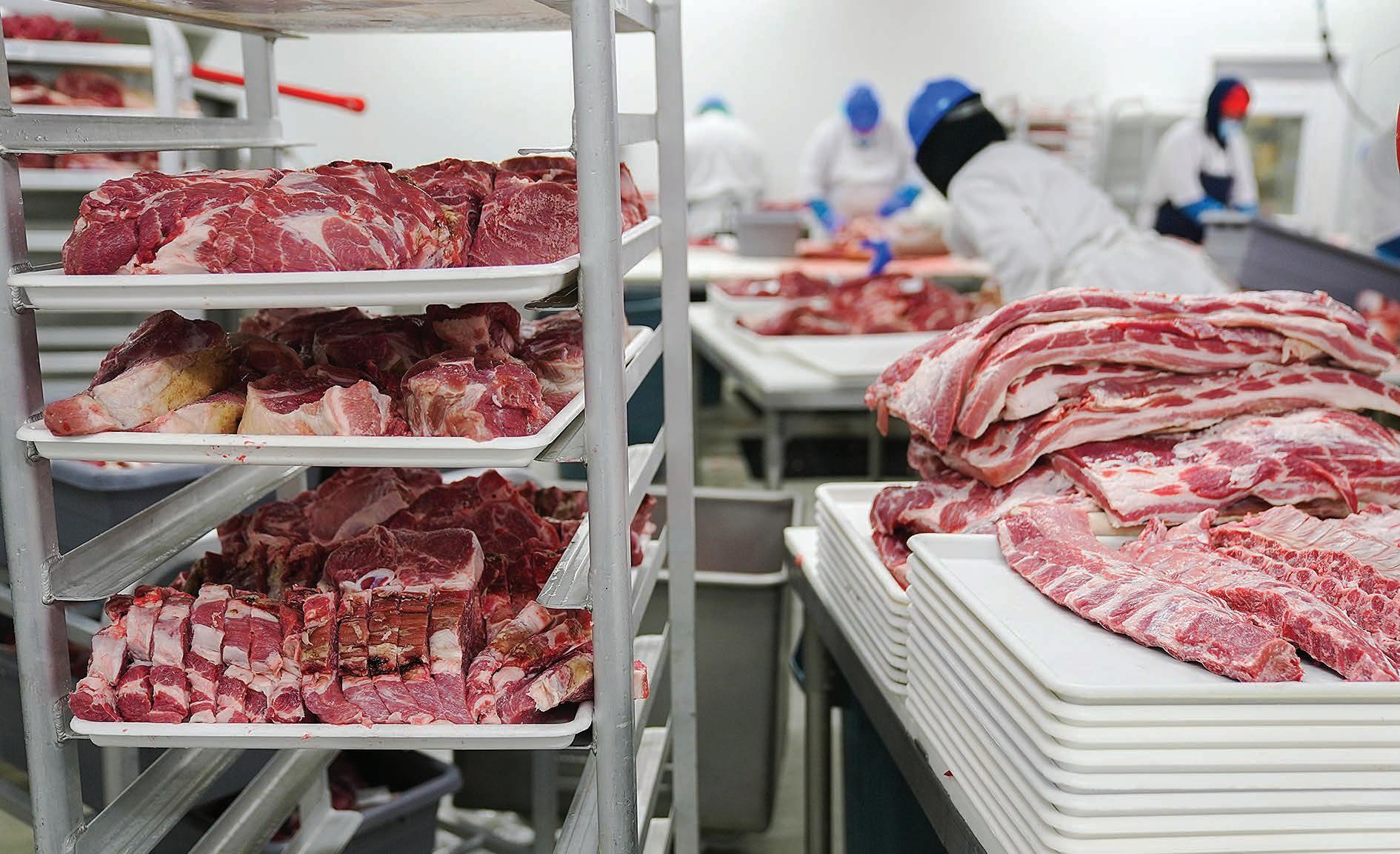
Conley sees next year as quite a bit tougher with consumer demand and market prices softening, particularly for sheep meat, combined with inflationary pressures, higher interest costs and a continuation of labour and supply chain pressures.
Greenlea’s Tony Egan confirmed the view of Alliance and ANZCO about the favourable season for margins, although he emphasised the challenges already identified as well as noting the increase in operating and logistics costs.
He also referred to softening market conditions, although shipping problems have eased and Greenlea’s plants are fully staffed at present.
Wilson Hellaby CEO Fred Hellaby agreed the season benefited from the ideal combination of rising markets, competitive schedules and a falling currency, although in his opinion the challenges of looking after people, managing logistics and rising costs make it way harder to operate than used to be the case.
AFFCO obviously no longer publishes a separate result, but I understand it has had an excellent year and is now operating with a dramatically improved labour pool and processing availability compared with last year. Its emphasis is no longer on market share, but instead on optimising margin on what it processes and sells.
New Zealand’s biggest processor and exporter, SFF, is now almost unrecognisable from the cooperative saddled with debt and ageing plants before the 2016 deal with Shanghai Maling to sell half the company. This resulted in a fundamental recapitalisation of the balance sheet, which has facilitated a comprehensive plant upgrade and reduced finance costs, as well as the creation of an increasingly market-led product range.
CEO Simon Limmer referred to the difficulties during the year caused by supply chain challenges, labour availability and the impact of covid in many of the communities in which the company operates, but also noted strong demand in key markets, which enabled it to reap the benefits of record or near-record pricing.
Although major markets are now experiencing greater headwinds
as a consequence of global conditions, SFF’s recent strong performance saw $62m of capital investment in the business last year, which will increase to around $100m per year in operations and technology over the next few years.
Limmer noted improved labour availability compared to 2021 thanks to investment in labour planning and immigration, but the company still does not have complete confidence it can guarantee its optimal labour supply for the coming season, which still faces uncertainty from covid disruption.
None of the CEOs spoken to was confident 2023 would see a repeat of the success of 2022 for the reasons stated, but equally all were pleased with the year’s performance, which has enabled reinvestment in operating efficiencies as well as competitive payments to suppliers. Shipping and labour problems appear to have lessened, but trading conditions in main markets –particularly China, but also the European Union and the United Kingdom – look uncertain well into next year.
In 2023 New Zealand’s meat marketers will certainly have a harder job extracting orders from their customers at a good price, which means suppliers won’t receive as much for their livestock.
23 FARMERS WEEKLY – farmersweekly.co.nz – December 5, 2022 Opinion 23
ISSUES: Alliance chair Murray Taggart says the company faced substantial labour and logistics challenges in 2022.
ONE OUT OF THE BOX: Strong consumer demand for New Zealand meat products ensured a successful year for the meat industry.
Shipping and labour problems appear to have lessened, but trading conditions in main markets, particularly China, but also EU and UK, look uncertain well into next year.
Fully woolly fill makes for warm fuzzies
Wilson & Dorset’s industry-first fully woolly furnishing series has Amanda Dorset overflowing with woolly excitement. She spoke to Annette Scott.

PARTNERS in life and in business Amanda Dorset and Ben Wilson have been producing sheepskin furnishings for the past 16 years, having spied an opportunity to do something cool with New Zealand sheepskins.
Passionate advocates for wool, the couple have also striven to grow the integrity of their woolly products with a focus on better outcomes for the planet.
“NZ was throwing six million pelts in the landfill every year. Honouring the animal that produces this amazing fibre, we found a way to make full use of the wool.
“Even better, we have now found a way to go fully woolly with collaboration, saving tonnes of synthetic from the landfill,” Dorset says.
It all began over a “wilderness cuppa”.
Dorset and Wilson had known each other since their high school days, and years later reconnected to brew a quiet sheepskin revolution.
Camping on the shores of Lake Wānaka with a bunch of old mates at a New Year’s Eve party, they got talking about the wonders of wool and the game-changing ways they could bring the luxury and durability of sheepskin to the world.
By the end of the night, it was all sorted.
Their chat was a catalyst for the development of a new lounging concept – the Wilson and Dorset ethos of bringing nature into the home to create opportunities to slow down and reconnect with the environment and each other.
It was nurture rather than nature that led to Dorset’s passion for wool’s natural features, established during the five years she spent marketing Icebreaker during the early days of the now iconic NZ outdoor clothing brand.
For Wilson, wool may well be
found in his DNA.
One of his earliest memories is of playing on the sheepskin carpet his father had made for the lounge in his family’s East Taieri farmhouse.
This, perhaps, is where his deep connection with the form and functionality of wool fibre was embedded.
With three generations of entrepreneurial forebears behind him, seeing business opportunities in re-thinking primary products came naturally to him.
“They say it takes more than one person to make a good idea happen, and this is true of the Wilson and Dorset collaboration,” Dorset says.
From their destination store on Wānaka’s main street the couple shipped their signature furniture pieces all over the globe, fulfilling their dream of redefining the shared spaces in which people live, work and play.

But Dorset had one bugging frustration.


She was “sick to death” of carefully crafting natural, 100% woollen products for a market of conscientious consumers, then having no option but to stuff them with synthetics.
“But we were not in the business of fill and you need to focus on what you know,” she says.
Now the pair have launched a series of home decor pieces that are “fully woolly” outside and in.
Collaborating with a similarly future-focused wool brand, Wisewool, the couple’s sheepskin cushions and stackable stone sets – which act as bolsters or floor furniture for leaning against, working on or relaxing into – are filled with Wisewool’s revolutionary engineered wool.
It is a huge sigh of relief for Dorset, who says Wilson & Dorset have been focused on better outcomes for the planet for some time, but just couldn’t find a suitable supplier of natural filling.
When renowned chef and restaurateur Al Brown introduced Dorset to Harry Urquhart-Hay, one of Wisewool’s founders, the pair immediately saw the potential to work together.

“As the world learns more about the peril the planet is in, there’s rising demand for 100% renewable, sustainable and biodegradable fibres that offer style, form and functionality,” Dorset says.
“We could no longer, in good




heirloom baby blankets
conscience, contribute to the climate emergency by filling our natural woollen products with petrochemical-based synthetics.
“As the saying goes, what’s inside matters.

“Wisewool’s wool fill provided us a 100% natural offering and was the solution to us maintaining environmental integrity.”
When the filling arrived Dorset “couldn’t wait to rip that bloody synthetic fill out of cushions sitting in my warehouse”.


By using Wisewool wool fill inside its cushions and stone sets, more than 600kg of imported polyester fill will be saved each year from eventually ending up in landfill.


“Soon, our shaggy sheepskin beanbags will also be filled with wool, saving a further 350,000 litres of nasty synthetic beans


from being manufactured and used.
“That’s 500t of plastic over 10 years that is not going into landfill. That’s something to be totally motivated by.”
Urquhart-Hay says using wool fill is good news for NZ, the planet and for the strong wool sector locally.

“At Wisewool, one of our key values is to improve strong wool prices for our farmers.
“We do this by taking their incredible fibre, which already has a reputation for being the best wool in the world, and developing it into a value-add, branded product.
“At our plant near Matamata, we engineer NZ strong wool into woollen buds and woollen cloud,” Urquhart-Hay says.

Working with Callaghan Innovation and the University of Otago’s textile department, Wisewool has learnt to harness the compressional resilience of wool.
“Therefore, we can replace synthetic filling with our premium equivalent where loft is required, from puffer jackets to pillows to sofas,” Urquhart-Hay says.
Being fully woolly means the products have so much more integrity to them.
“This is a collection I can say we’re truly proud of through and through,” Dorset says.
“Each product is of the land, harnessing wool’s natural attributes and will return to the land and fully break down at the end of its long life.”
She believes the “pendulum is finally turning”.
Consumer surveys show people are feeling disconnected from nature and have nagging doubts that they are not leading the life they should be.
Connecting to nature is driving buying decisions at a time when outside-the-box thinking about wool meets the realisation that plastics are ruining the planet.
“This is good for farmers, this driving value up the supply chain, this is good for NZ, good for the planet – no one is losing here,” Dorset says.
Premium New Zealand Merino
www.naturesgiftforbaby.com At Natures Gift For Baby we believe the key to a good nights sleep is a great blanket! Gentle on Baby’s skin and gentle on the environment. 5 timeless colours. $99ea LK0113340© Free deliverywithinNZ 24 People FARMERS WEEKLY – farmersweekly.co.nz – December 5, 2022 People 24
This is good for farmers, this is good for NZ, good for the planet –no one is losing here.
Amanda Dorset Wilson and Dorset
VISION: Amanda Dorset says it was nurture rather than nature that led to her passion for wool’s natural features.
Tunnel-totable farming on the rise – literally
NEW Zealand’s first large-scale vertical farm will start production this month with an eye to filling supply chain gaps that emerge when traditional growers cannot meet market demand. Gerald Piddock spoke to Greengrower CEO Tom Schuyt.
ONCE it’s up and running, the new vertical farm at the Waikato Innovation Park in Hamilton will produce about 4000 bags of leafy green vegetables a day for customers throughout the upper North Island – in about half the time it would take to grow them outdoors.
Built by new company Greengrower, the farm has been bankrolled by a group of investors from Waikato and elsewhere around New Zealand with a background in agribusiness and technology businesses.
Greengrower chief executive Tom Schuyt says they decided to create a vertical farming business in NZ after observing the challenges traditional growers are facing around supplying the domestic market.

Having a vertical farm offers resilience and alternatives for a market that has been regularly hit with supply issues due to weather events.

He says it will complement rather than compete with outdoor growers.
“We set up the business to try and counter-balance some of the challenges traditional growers face and work with them to be able to supply all year round and fill the supply gap that exists because of those challenges.”
The operation is based on
overseas vertical farming methods and designs that have been adapted for NZ.
The farm’s nursery has begun growing greens with the aim of increasing production by midDecember and being in a steady production state by the end of the year.
Construction workers are putting the final touches to the farm that, when finished, will hold three growing tunnels.

These tunnels are the vertical farming equivalent of a production chain, growing a mix of lettuce, spinach, rocket and kale as well as herbs and microgreens.
Plugs of a peat soil solution are seeded using automation and grown in a nursery before being automatically transported to one of the tunnels where they are grown to maturity.
“They are fed nutrients and light and look after the environment the plants are growing in and we’re able to control the way that process happens, but it’s a very natural process,” Schuyt says.
The older plants are also given time in the dark to simulate night and give them a chance to “rest” from the light.
LED lighting is used to simulate sunlight and each tunnel has a hydroponic irrigation system to ensure the plants receive the appropriate amount of water.
Temperature and humidity levels are kept constant.
The system runs on a combination of observation by staff agronomists and sensors that monitor the plants’ light and water intake, humidity and growth.
We’re able to optimise the amount of day, the intensity of the day in terms of the lights and the weather we’re able to create in the room in terms of the temperature and the humidity.”
As a result, the plants grow twice as fast as they would under outdoor farming. What would take 21 days to mature in the field will be ready for harvest in 10-14 days.
The system needs little fertiliser and is spray-free and the produce can be eaten without the need for washing. The farm has the flexibility to change what is grown depending on customer demand, he says.
farming also means it is able to optimise its environment more efficiently when it comes to growing compared to a greenhouse, he says.
The plants are harvested and bagged onsite in a shelf-ready product in a room at the back of the facility.
Schuyt says the warehouse also has enough capacity to expand production if needed.
He says Greengrower is in ongoing discussions with retail outlets and the food service industry around the upper North Island regarding where the product will be sold or served to the public.
Tom Schuyt
“We run a circular system so all of the water that the plants don’t absorb, we’re able to capture, retreat and re-use. The water that the plants use is limited to the amount they need to grow,” Schuyt says.
It means Greengrower uses about 1% of the water a conventional outdoor farm would use, he says.
“We’re able to optimise the plant’s growth through its process.
The operation requires a lot of power and to that end, Greengrower has an agreement with an energy provider to provide it with net carbon-zero-sourced electricity, meaning all of the electricity is sustainably sourced.
“We’re very focused on our sustainability credentials and it’s important to us that it happens all of the way through our raw material supply.”
Schuyt says the produce will be cost competitive with traditional farmed products.
The vertical nature of the
Schuyt says the company is working with a local partner that takes the leftover peat soil for composting and turns it into a new product rather than disposes of it as green waste.
“When I look at what we’re trying to do, it’s to show that this is a viable alternative way of growing which supports and supplements the existing industry. The growth from there will be driven off the supply gap that may or may not continue to exist.”
Greengrower will have an official opening early in the New Year.
25 Technology FARMERS WEEKLY – farmersweekly.co.nz – December 5, 2022 Technology 25
UP AND AT ’EM: Greengrower chief executive Tom Schuyt says the vertical farm will complement rather than compete with traditional outdoor farms.
We’re able to optimise the plant’s growth through its process. We’re able to optimise the amount of day, the intensity of the day in terms of the lights and the weather we’re able to create in the room.
Greengrower
GREEN SHOOTS: Greengrower has begun growing vegetables in its nursery as it prepares to start producing a range of green leafy vegetables at its vertical farm in Hamilton.
BAGGED IT: Greengrower will produce more than 4000 bags of leafy greens in specially designed tunnels similar to these in an overseas vertical farm.
UK egg farmers call for new costing model
FREE-RANGE egg farmers in the UK are calling for supermarkets to look to the dairy sector for answers as the average producer loses the equivalent of 56c for every dozen eggs they sell.
Farmers are already reducing production or giving up entirely, with the industry urging retailers to look to the cost-of-production model used in supermarket milk contracts to ensure producers are paid fairly.
Soaring feed and energy bills have pushed the average cost of producing a dozen free-range eggs to £1.38, based on costings from consultancy ADAS for the British Free Range Egg Producers Association (BFREPA). That compares with an average sale price of £1.09 per dozen, a loss of 29p.
Feed accounts for 54% of total costs and has risen from the equivalent of 55p/dozen to 75p/ dozen in the past year.
Electricity costs have doubled to 5p/dozen and there are higher labour, building and other costs.
Robert Gooch, chief executive of BFREPA, said egg producers have
not made enough profit to invest since 2019, but the situation has worsened.
“We asked for a 40p/dozen uplift in egg prices at the start of the year from the supermarkets, but that did not happen.
“Prices are now rising, but are still way off break-even.”
He added the boom and bust of the industry could only be solved by a change in the way supermarkets buy eggs.
“We suggest that supermarkets should use the dairy industry’s pricing, where prices reflect the cost of production and provide a margin for producers.”
Figures from BFREPA show that despite a 27% increase in the cost of producing eggs since December 2021, farmer prices are up by just 21%, while retail prices have risen by between 7% for Marks & Spencer (to £3.75/dozen) and 24% for Asda (to £2.45/dozen).
In contrast, the cost of producing milk in the year to September rose by 37%, according to buying coop AF, but fresh milk prices have increased by up to 50%.
Pressure on margins led to a 9.6% drop in UK egg production in the third quarter of 2022, according to Defra, with output expected to continue to fall.
Annual production in the year to the end of September was down 5.6% to 897.5 million dozen, although that is 15.6% higher than 10 years previously, as egg production has been one of the fastest growing sectors in British agriculture over the past decade.
The reduction in output has hit the availability of eggs for retailers and other users, with some supermarkets rationing how many eggs shoppers can buy.

BFREPA estimates that 2.6 million birds have had to be
slaughtered due to avian flu since the beginning of September 2021, but the main reason for the decline in output is farm economics.
As output has fallen, imports have jumped. Sainsbury’s attracted a lot of negative attention when it stocked Italian barn eggs on its shelves, but that was part of a longer term trend.
UK delays EU export ruling on vet checks
THE UK government has postponed its controversial plans to change the rules regarding European Union animal health checks after they were met with outrage by the livestock industry.
The change, which was due to come into force next month, would have made it compulsory for anyone selling an animal, or part of an animal, for export to be in possession of a veterinary attestation.
National Farmers Union livestock board chair Richard Findlay branded the move “unworkable”, pointing to the acute shortage of vets and the increased cost and administrative burden this would put on farmers already faced with a challenging market.
Speaking last month, Findlay said: “There are not enough vets to do this at the moment and it adds cost and paperwork and regulation at a time when the government is suggesting they want us to increase exports and cut regulation. This goes directly against that.”
Following the climb-down, farmer declarations will continue to be allowed on EU Export Health Certificates (EHCs) until December 13 2023.
The delay has been welcomed by the meat industry.

Nick Allen, chief executive of the British Meat Processors Association (BMPA), said: “It has come as a welcome relief that Defra [the Department for
Environment, Food and Rural Affairs] has agreed to postpone the introduction of the new rule requiring all farmers to provide a vet-signed attestation confirming regular farm visits.
“Given the current shortage of vets, moving the start date was essential to give all farmers affected enough time to arrange these visits.”
Allen said the BMPA is now looking forward to working with Defra to “help design a suitable system to manage and implement these new requirements”.
He added: “We need to define how the new vet attestations will be passed through the supply chain from farm to market to processor.
“And, if we are to avoid having an unwieldy paper-based system, a new digital solution must be designed, developed and tested before December next year.”
A Defra spokesperson said the change had been postponed following a “planned review”.
Farmers Guardian
Robert Gooch British Free Range Egg Producers Association
In the first nine months of the year, egg and egg product imports were up 24.2% on the same period last year, to the equivalent of 54,605t, according to HM Revenue and Customs figures.
The value of that trade was up 73% to £151m, with prices up 39%. Exports during the nine-month period were down by nearly 11%, with the average price up 20.5%.
Farmers Guardian
UK farmers’ children ‘silenced in schools’
THE children of British farmers are often afraid to mention their families or dispute inaccurate information about the industry they come from when it is presented in class at school, a Conservative MP says.
Alicia Kearns, who represents Rutland and Melton Mowbray, said she had found plenty of evidence of a disturbing “anti-farming” narrative in her constituency’s schools, despite the fact that it is mainly rural.
Many of the town’s leading companies are involved in making Stilton cheese, traditional pork pies and brewing, and it has one of the UK’s dwindling number of town-centre livestock markets.
“I am concerned about the anti-dairy, anti-meat and, frankly, anti-farmer narrative that I am starting to see,” Kearns said.
“Students and children of farmers feel they are being silenced and cannot speak out in support of their families, who feed the country.”
Among the claims she has heard is that cows produce most of the methane in the world.
“I ask students to put their hands up if they are from farming families, and often between a quarter and half the hands go up,” she said.
“But when I tell them that information is not true, it is often the first time they have heard anybody challenge the narrative.”
She said she fears some
children might not be consuming enough milk or getting the calcium or other nutrition they need as a result.
“We need to have a discussion over how we communicate this, and make it clear that not all the information being presented about meat and dairy products is true,” she said.
She said farmers should highlight how their products, as well as being nutritionally superior, compare environmentally with some of the alternatives in vegetarian and vegan diets.
“Cows’ milk is far better than shipping in things such as soya milk, which comes from beans that need 100 times as much water to create a litre of milk than a cow does,” she said.
“Other options, such as avocados, also use incredibly high volumes of water, and need to be shipped thousands of miles to reach the UK.”
She said the UK’s Department for Education and the Department for the Environment, Food and Rural Affairs need to work together to ensure the false narrative is challenged.
“We must make sure we have that debate on climate change and correct the false narrative about farmers’ role in it,” she said.
“Perhaps the message needs to come from an independent organisation, but that unchallenged narrative has to change.”
26 World FARMERS WEEKLY – farmersweekly.co.nz – December 5, 2022 World 26
NO YOLK: Some supermarkets are rationing how many eggs shoppers may buy as farmers reduce production or give up altogether.
Prices are now rising, but are still way off breakeven.
Farmers Guardian
There are not enough vets to do this at the moment and it adds cost and paperwork and regulation at a time when the government is suggesting they want us to increase exports and cut regulation. This goes directly against that.
Richard Findlay National Farmers Union
DELAY: UK meat exporters have another year to organise vet attestations.
Wharepapa South 356 Whatauri Road
Open Day
Something for everyone
• 164 ha dairy unit - 33 km southeast of Te Awamutu

• Production has been around 100,000 kgMS for the last five years
• Large executive style main home; 30 ASHB shed and feed pad
• A mix of contour - flat & easy, steeper with rocky outcrops
• Good fertile free draining soils
• There is work required but the basics are here
Our seriously for sale vendor wants a result! The property can be purchased as one lot or in two parts.

Tender closes 4.00pm, Wed 14th Dec, 2022 (unless sold prior), Property Brokers, 138 Arawata Street, Te Awamutu View Wed 7 Dec 12.00 - 1.00pm Web pb.co.nz/CBR111025
David McGuire M 027 472 2572 E david.mcguire@pb.co.nz
John Sisley M 027 475 9808 E john.sisley@pb.co.nz


Waitaanga grazing or forestry









A 546 ha (approx) grazing property centrally located approx 117 km southwest of Te Kuiti, 97 km northeast of New Plymouth and 71 km west of Taumaranui. With over half of the 450 ha effective area being easy contour the property is capable of running at least 80% cattle. Fenced into 30 main paddocks with natural water. Winter stocking rates include a total of 850 sheep and 635 cattle. Infrastructure includes a three bedroom and a four bedroom dwelling, a four stand woolshed with covered yards, concreted Te Pari cattle yards, two implement sheds, one hayshed and a fertliser bin. This farm offers diversity in stocking options and with native bush surrounds, bee keeping and hunting options.




For Sale By Negotiation + GST (if any)
View By appointment Web pb.co.nz/TER109593
Doug Wakelin M 027 321 1343
Di Janett M 027 554 2227
Pekanui aesthetically appealing farm
Pekanui is located in the Tararua district and is known for its spectacular scenery. Just a little over 15 mins from Dannevirke on Weber Road, this 254 ha property enjoys a balanced aspect that offers amazing views over the Weber District and out to the ocean. Incorporating an excellent balance of farmland with quality soils, stands of native trees, stunning multiple freshwater creeks and limestone rock formations, this unique environment combines a sustainable balance of productive farming and nature. The contour is a mix of easy to medium and some steeper areas. The farm is well tracked and has a high standard of fencing throughout.
Tender closes 2.00pm, Thu 15th Dec, 2022, Property Brokers Ltd 4 Stanley Street, Dannevirke
View By appointment
Web pb.co.nz/DR104636
Sam McNair M 027 264 0002
Jim Crispin M 027 717 8862
Ohura 262 Waitaanga North Road
Dannevirke 1921 Weber Road
Tender
Property Brokers Ltd Licensed REAA 2008 pb.co.nz Proud to be here 27 Property
Awatuna 2178 Eltham Road
Tender
266 ha - Large scale Awatuna dairy farm
Our motivated vendors have instructed Property Brokers to offer for tender this larger scale Taranaki dairy farm located in the strong farming area of Awatuna. This farm will appeal to those wanting to grow their farming business or looking for a sound investment. The contour is flat and is well subdivided with excellent laneways. Fertile Egmont Black Loam soils help promote excellent pasture growth, and the regular cropping ensures a strong pasture renovation program with modern cultivars used. The average production for the last four seasons is 317,000 kgMS from an approximate peak number of 780 cows. The infrastructure is of a good standard and includes four houses, 60 bail rotary shed, Protrack, inshed feeding, two feed pads, modern effluent systems with traveling irrigators, multiple hay/calf sheds and a workshop. Water is sourced from the Waimate West water scheme. If you are looking for a flat, larger scale and well located South Taranaki dairy farm, look here!

Pahiatua 672 Ruawhata Road
Auction
Tender closes 2.00pm, Thu 15th Dec, 2022, Property Brokers, 227 Devon Street West, New Plymouth
View By appointment Web pb.co.nz/NPR111710

Greg O'Byrne M 027 598 3000 E greg.obyrne@pb.co.nz
Ruawhata Dairies - 226 ha




Located under 10 minutes drive from Pahiatua, Ruawhata Dairies is a 226 ha dairy farm that is well suited to continue as an established dairy unit or a summer safe, support or finishing farm. Regularly high producing with last season 210,000 kgMS off a 180 ha platform, the property boasts superior soils, virtually all flat contour, modern pasture species, quality farm infrastructure and two dwellings. Improvements include a 54 bail rotary shed complete with a 500 cow feed pad and a good range of shedding. Dwellings include a large three bedroom main residence set in established grounds and a second three bedroom home nearby providing excellent on farm accommodation. Ruawhata Dairies will attract interest from across a range of agricultural sectors with it's high productive capability and quality infrastructure.

Auction 2.00pm, Thu 15th Dec, 2022, (unless sold prior), Bush Multisport Lounge Bar
View By appointment Web pb.co.nz/PR111895
Jared Brock M 027 449 5496 E jared@pb.co.nz
Sam McNair M 027 264 0002 E sam.mcnair@pb.co.nz
Jamie Smith
M 027 220 8311 E jamie.smith@pb.co.nz
Property Brokers Ltd Licensed REAA 2008 | pb.co.nz Proud to be here 28
Ashburton 250 Fords Road
Deadline Sale
Deadline Sale
First class hidden jewel

Nestled amongst the native bush with views of Akaroa Harbour and beyond sits this 43 ha property with an approved building platform ready for your next dream home. All the hard work has been done including the construction of a driveway and power not too far from the building site. The property is subdivided into four paddocks, all with stock water supplied by a spring. Situated in a desirable rural setting, this property is just over an hours drive to Christchurch and under 30 minutes to Akaroa. Given the coastal aspect and the sweeping views of the Akaroa Harbour, this property offers much more than meets the eye. Call Simon or Gareth for more information.











Deadline Sale closes Wednesday 11th January, 2023 at 12.00pm, (unless sold prior)




View By appointment Web pb.co.nz/DFR107028


Simon Anderson M 021 0828 5532
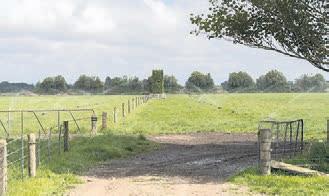
Gareth Cox M 021 250 9714
46.79 ha - In a class of its own
This is a quality small farm offering a wide range of land use options to intending purchasers. From its current use as a highly productive calf rearing / beef finishing operation there are several alternative uses from intensive arable to dairy support. The farm irrigation consent and system provide water for a full range of farming options. Excellent fencing, paddock subdivision, shelter and access are in place along with cattle yards, shed and workshop. Featuring a quality executive home set within private sheltered landscaped grounds with easy-care gardens. The vendors have developed this small farm to a high standard with excellent improvements and infrastructure.
4 2 2
Deadline Sale closes Thursday 15th December, 2022 at 12.00pm, (unless sold prior)
View By appointment Web pb.co.nz/AR111712
Greg Jopson M 027 447 4382
Wainui 100 Jubilee Road
Together Stronger Property Brokers Ltd Licensed REAA 2008 PB053815 Our combined strengths complement each other, creating more opportunity for our customers and Farmlands shareholders across provincial New Zealand. • A nationwide network from Northland to Southland • Sound, trustworthy advice from market-leading experts • Shareholder benefits and preferential commission rates means • more money in your pocket Bigger networks, more buyers, better results For more information call 0800 367 5263 or visit pb.co.nz/together Property Brokers Ltd Licensed REAA 2008 pb.co.nz Proud to be here 29
Newstead 879 State Highway 26
Pristine unit in quality location!
A pristine dairy unit with expansive home, quality infrastructure and perfect locality to Hamilton City. Operating a split spring /autumn calving regime with 200 cows, the boutique approach has an average three year production of 83,405kg/MS. A tidy 20 ASHB shed with Waikato milking plant is well positioned and feeds directly from the herd home facilities, which has been greatly beneficial for both stand off and feeding. Farm water is sourced via town supply. Boasting a beautiful homestead, designed for a large family while a chic styled cottage is nearby.











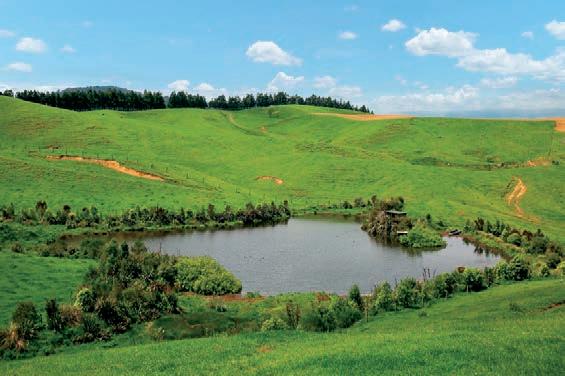







Located near Newstead, only a short drive to the expressway and Ruakura’s new inland port.

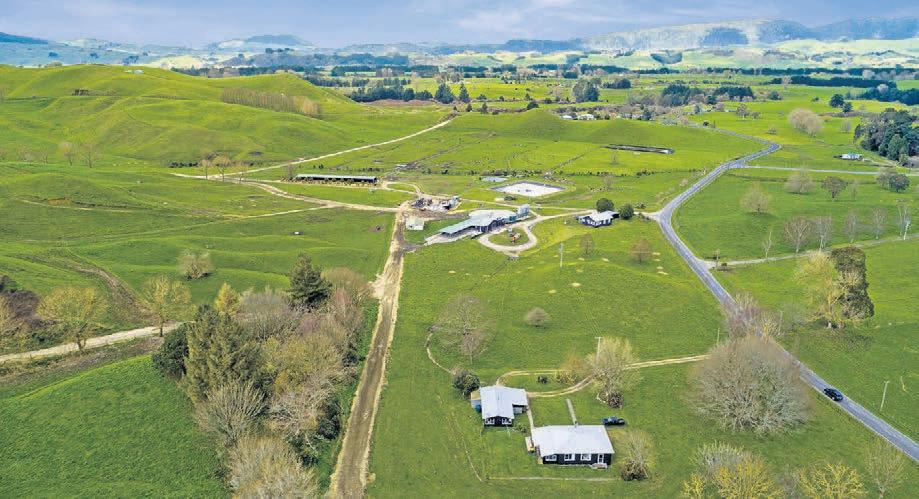


bayleys.co.nz/2314026


82.8ha 8 5
Auction (unless sold prior) 11am, Thu 15 Dec 2022 96 Ulster Street, Hamilton View 12-1pm Tue 6 Dec or by appointment Scott Macdonald 027 753 3854 scott.macdonald@bayleys.co.nz
SUCCESS REALTY LIMITED, BAYLEYS, LICENSED UNDER THE REA ACT 2008


Rotorua 385 Whirinaki Valley Road
Scale and proven production
A 48-ASHB with a five year rolling average of 303,000kgMS from 800 cows. The contour is predominately rolling with steeper sideling’s with a milking platform of 280ha and the balance being used for support land and 30ha planted in trees. A central race system provides access throughout the property and water is supplied via three bores. The infrastructure and systems throughout the farm are excellent, including an in-shed feed system and a large calf-rearing facility. Three dwellings and a large implement shed complete this property. This is a rare opportunity to purchase a quality dairy farm in a prime location. Property can be split to purchase 272ha and 70ha separately. bayleys.co.nz/2450977

342ha
Asking Price $8,250,000 + GST (if any) View by appointment Derek Enright 027 496 3974 derek.enright@bayleys.co.nz
SUCCESS REALTY LIMITED, BAYLEYS, LICENSED UNDER THE REA ACT 2008
AUCTION: Thurs 15 December 2022 at 1pm at the Cambridge Community Pavilion (unless sold prior) OPEN DAY: Tuesday 6th December 11 30am 12 3 30pm 4 2 3 CAMBRIDGE 2/205 OLIVER ROAD Superb location just 17km from Cambridge 85ha of flat to easy rolling contour, with 15 5ha of planted maize The stunning renovated 4 bedroom, 2 bathroom, 3 living area home is a entertainers dream with heated swimming pool, alfresco living and elevated views DAVID SOAR M: 027 284 9755 E: DAVID@CAMREAL CO NZ MATT SEAVILL M: 027 444 3347 E: MATT@CAMREAL CO NZ 4 4 2 CAMBRIDGE 4/360 ASPIN ROAD 7 727ha or 18 3 acres of pasture and extensive native planting Great location just a short drive to Cambridge 10km distance 4 Bedroom 4 bathroom 5 toilets 3 living 2 offices Cedar schist recycled timbers and solar power system DEADLINE SALE: Closes Wednesday 14th December 2022 at 4.00pm at the office of Cambridge Real Estate, 47 Alpha Street, Cambridge (unless sold p OPEN DAY: Sunday 11th December 12 00pm 12 45pm prior). MATT SEAVILL M: 027 444 3347 E: MATT@CAMREAL CO NZ 30 FARMERS WEEKLY – farmersweekly.co.nz – December 5, 2022 Real Estate 30
Considered by some as being the best dairying land in the District and maybe even the Waikato. For those wanting the best of the best your quest is finally over as this outstanding Dairy property located only a few minutes from town will impress in more ways than one.
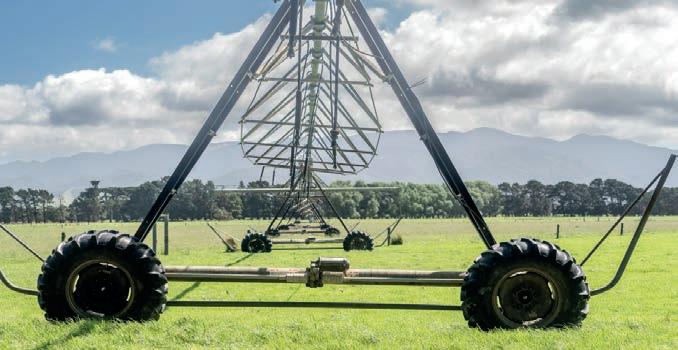


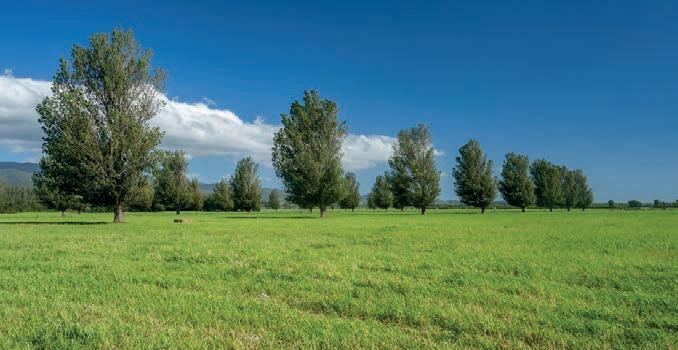








- 74.1460 hectares freehold
- Three separate titles
- Average production of 194,488 kg/ms achieved from freehold and lease land
- Adjoining 80 hectares available to lease
- 42 aside herringbone cowshed
- 400 cow feedpad
- Three houses
- Modern effluent system and storage facilities
Faithfully farmed by the same family for over 100 years, this is an outstanding opportunity to acquire a quality farm with location, contour and highly fertile soils with the bonus of additional lease land which is just as good as the home block.
•
•
•
•
•
Large Scale Dairy with Upside 330.7412 hectares Gore,
countryandco.nz
Southland
• 50 bail rotary with ACRs + three housing options.
Well located, just 9.3km from Gore.
Milking 770 cows, can lift with 950 cow consent until 30/5/2030.
Semi self-contained unit, with additional runoff on boundary.
Well presented property with excellent regrassing history.
Deadline Private Treaty Closing 31st
at
(unless sold prior) Ref: 5301171 Country & Co Realty Ltd, 33 Arena Ave, Invercargill, Licensed under the REAA 2008
027
shay@countryandco.nz 03
Matt
matt@countryandco.nz For Sale Deadline closes Thursday 15 Dec, 1pm (unless sold prior) View Open Homes: Tues 29
Tues
blueribbonharcourts.co.nz/property/OH9756
Fantastic opportunity for purchaser wanting scale and location.
January
2pm
Shay Moseby
268 6879
218 8959
Harrington 027 498 0474
Nov, 11.00am - 12.00pm
6 Dec, 11.00am - 12.00pm
Arguably the Best Soils in the District
Otorohanga 148 Mangawhero Road 74.14 Ha Blue Ribbon Realty Limited Licensed Agent REAA 2008 Kerry Harty M 027 294 6215 P 07 873 8700 E kjharty@harcourts.co.nz 31 FARMERS WEEKLY – farmersweekly.co.nz – December 5, 2022 Real Estate 31
WAIKATO

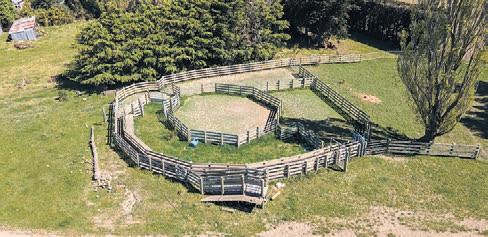

pggwre.co.nz/PUK37013


•



• Spray irrigated with combination of Acton water and ground water with long term consents 2.5ha storage pond, two pivots, three rotorainers
pggwre.co.nz/ASH36606

PGG Wrightson Real Estate Limited, licensed under REAA 2008 Helping grow the country
EXCLUSIVE
PRICE BY NEGOTIATION Plus GST (if any) VIEW By Appointment Only E kane.needham@pggwrightson.co.nz M 027 336 8709 Kane Needham
MEREMERE,
Location Plus! 88.7ha Fattening unit/run-off block located 2km from the Hampton Downs on-ramp of the Waikato Expressway with a private driveway down through established trees. The wide central raceway leads to the back of the property, feeding onto wellsubdivided paddocks all with troughs supplied by town water supply. The electric fences on the farm are powered by solar power unit. • Solid cattle yards, haybarn and woolshed • 25+ paddocks of easy rolling, well-fertilised pasture Producing some of the best local prime cattle
NEW LISTING
ASHBURTON Chertsey Kyle & Lambies Roads 'Inverell' - Arable & Dairy Support with Scale
337ha arable and dairy support property
DEADLINE PRIVATE TREATY Plus GST
any) (Unless
Closes
E tim.gallagher@pggwrightson.co.nz M 027 801 2888 Tim Gallagher RURAL | LIFESTYLE | RESIDENTIAL 32 Advertise with us Reach hundreds and thousands of rural New Zealanders every week Call Grant 027 887 5568 FARMERS WEEKLY – farmersweekly.co.nz – December 5, 2022 Real Estate 32
• Outstanding set of cattle yards in the centre of the property and main yard with 895T grain storage, woolshed and sheep yards Lismore silt loam soils with a history of vegetable and specialty seed production Options for further development or walk in and farm. Early settlement preferred
(if
Sold Prior)
3.00pm, Tuesday 24 January
Herbage Seed Subsection AGM
ELECTION
Nominations are called to fill
To be held: Monday, December 12, 2022 at 3.30pm



Venue: Mid-Canterbury Vintage Machinery Club Meeting Room, c/- Ashburton A&P Showgrounds, Seafield Road Entrance, Ashburton.


Nominations are called for executive members for positions:


in the North Canterbury, Mid Canterbury and North Otago, Otago and Southland wards of the Federated Farmers Herbage Seedgrowers Subsection arising from the rotational retirement of three sitting members on Wednesday 17 November 2021.

















(a) North Island – 1 position. One (1) vacancy.

(b) North Canterbury/Marlborough/Nelson – 2 positions. One (1) vacancy.
If you are interested, nomination forms are available by emailingprawlinson@fedfarm.org.nz


(c) Mid Canterbury – 2 positions. One (1) vacancy.
*John McCaw, current Mid Canterbury representative is retiring by rotation but will be seeking re-election.
(d) South Canterbury – 1 position. No vacancy.
Nomination forms must be in the hands of the: Herbage Seedgrowers Subsection, PO Box 20448, Christchurch 8543 by 5pm Wednesday, 10 November 2021
(e) Southland/Otago/North Otago – 1 position. One (1) vacancy.
Please email Laura Morrison lmorrison@fedfarm.org.nz for nomination forms or further details
FF Herbage Seedgrowers advert - 1021.indd 1 30/09/2021 11:10:28
Combi Clamp Stock Handling Equipment offers a user-friendly design, versatility and incredible reliability with manual operation, durable construction and minimal maintenance requirements. Whether you’re handling Sheep or Cattle, the resounding feedback is that this gear is clearly designed by practical farmers. 0800 227 228 | combiclamp.co.nz Your farm office / extra accommodation sorted – Easy-to-build cabins Flat pack kitsets come complete with everything you need – from the piles to the roof. • 8.5m2 - 25m2 • Priced from $11,350 Assemble yourself or we can build it for you Farmers Weekly Special – Order your cabin prior to December 31, 2022 and your order will be freight free to the city nearest to you. To find out how easy it is to have your own European Premium cabin call James on 027 269 9498 www.eucabins.co.nz FANTAIL KEA LK0114126© BTZ Forestry Marketing and Harvesting (Obtaining the best profits for our customers) Farmers/Woodlot owner Tired of waiting for someone to harvest your trees? We are not committed to one buyer that is how we get our customers the most profit we can. Set up to do the smaller, trickier wood lots. No job too big or too small. Buyers of Woodlots and Forest. Free quotes • Markets for all species Email: BTZforestry@gmail.com LK0112808© ELITE REFRIGERATION LTD Email: chris@asaer.co.nz Mobile 021 230 6904 www.asaer.co.nz LK0112765© • Kit set chiller / freezer rooms • Mono-block refrigeration units • Freezer / chiller rooms Built to order • Ice machines • Trailer mounted rooms • Repairs – service – installations STOP BIRDS NOW! ZON BIRDSCARER HOOF TRIMMER LK0114029© Federated Farmers Arable HERBAGE SEEDGROWERS SUBSECTION
vacancies
am
FOR SALE Sheep or Goat Milking Plant 40 ASIDE SWING-OVER HERRING-BONE • Includes stalls feed system milk line • Milk silo 11000 litre with refrigeration • Plate cooler • Snap chill • Vacuum pump • Auto cleaning system • Gas hot water heater PHONE 027 443 0311 Price does not include dismantling Pick up available from Palmerston North, Manawatu HALF NEW PRICE $160,000 PLUS GST JW0113947© 33 Marketplace FARMERS WEEKLY – farmersweekly.co.nz – December 5, 2022 Marketplace 33
LK0114037©
ANIMAL HEALTH

RAMS FOR SALE







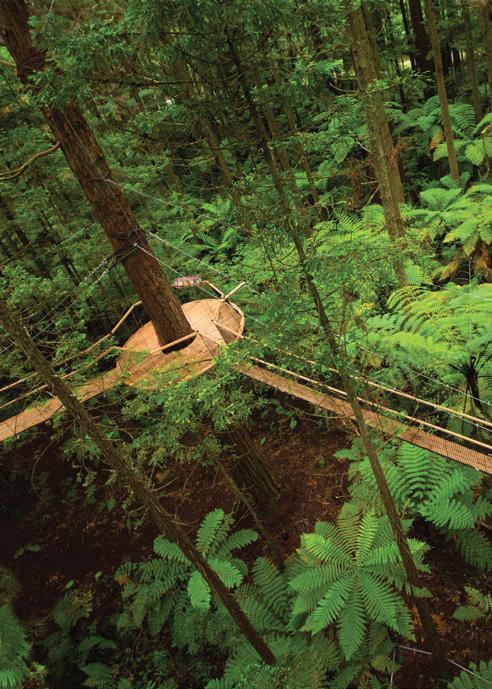

RURAL MASSAGE


FULL BODY massage in rural Ohaupo. Unwind. De-stress. www. ruralmassage.co.nz or call 027 529 5540.




FEED
STOCK



MOISTURE METERS Hay, Silage dry matter, grain. www.moisturemeters.co.nz 0800 213 343.



IN
SAWN SHED TIMBER including Black Maire. Matai, Totara and Rimu etc. Also buying salvaged native logs. Phone Richard Uren. NZ Native Timber Supplies. Phone 027 688 2954.
ready 18th December. $500. Phone 021 069 0106.

HUNTAWAY AND HEADING dogs. Deliver NZ wide. www.youtube.com/user/ mikehughesworkingdog/ videos - 07 315 5553.
TWO
www.nzadventures.co.nz info@nzadventures.co.nz Ph: 03 218 8569 • 027 550 6727 or 027 435 4267 Adventures - 4WD Tours LK0113766© New travel dates for 2024 coming soon LK0113971© 4X4 TAGALONG TOURS Bring your own 4X4 on a guided tour to discover more of the South Island. Tour 1: Molesworth Station, St James, Mailings Pass & Rainbow Stations
2 D’Urville
Other dates available for groups of 6 or more people on request Ph: 0274 351 955 E: info@southislandtoursnz.com • www.southislandtoursnz.com • ‘The Great Explorer’ Explore the Mackenzie Basin, Central Otago and Northern Southland with this 5 day 6 nights tour. • ‘The West Coast Wanderer’ Explore the majestic scenery and hidden gems of “the Coast” including the Denniston Plateau and the Haast area with this 7 day, 8 night tour. All these Tours are; Fully guided with radio contact; Fully catered and stay in very comfortable lodges, motels and farmstays; Made up of smaller tour groups (6-9 vehicles) and travel at a quieter pace. For further information contact: John Mulholland Mobile 027 228 8152 RANFURLY info@highcountryjourneys.co.nz www.highcountryjourneys.co.nz HIGH COUNTRY JOURNEYS Drive from station to station and experience the majestic South Island High Country THREE STUNNING SELF DRIVE 4WD SAFARI OPTIONS Now taking bookings for 2024 season • ‘The South Island Grand Slam’ Self-drive your own 4WD from Blenheim to Cardona through a network of high-country tracks including Molesworth on our most popular ‘7-day 8-night tour. LK0113596© EXCITING NEW TOUR WWW.TREEWALK.CO.NZ OPEN 7 DAYS 9.30AM TO LATE “A Rotorua Must Do!” To find out more visit www.mowermaster.co Phone 0800 422277 or 028 461 5112 Email: mowermasterltd@gmail.com Topper / Finishing Mower Genuine 11.5HP Briggs & Stratton Motor. Electric start. Belt driven. Cutting Height 30mm - 300mm LK0114058© $4200 GST INCLUSIVE MOWER MASTER TOWABLE MOWERS 34 FARMERS WEEKLY – farmersweekly.co.nz – December 5, 2022 Marketplace 34 Advertise with us Last issue for 2022 December 19 First issue for 2023 January 16 Contact your partnership manager for deadlines Office close dates December 20 to January 8 CHRISTMAS SPECIAL Buy $200 + grab a FREE 2pr Xmas socks $50 Worth www.thesocklady.co.nz FOR SALE DOGS FOR SALE DOLOMITE For a delivered price call .... NZ’s finest BioGro certified Mg fertiliser 0800 436 566 ATTENTION FARMERS FLY OR LICE problem? Electrodip – the magic eye sheepjetter since 1989 with unique self adjusting sides. Incredible chemical and time savings with proven e ectiveness. Phone 07 573 8512 www.electrodip.com ANIMAL HANDLING ANIMAL AND HUMAN healer, also manipulation on horses and dogs. December 5th- 10th, Kaikoura / Blenheim / Nelson / Culverden, Phone Ron Wilson 027 435 3089. CRAIGCO SHEEP JETTERS. Sensor Jet. Deal to y and Lice now. Guaranteed performance. Unbeatable pricing. Phone 06 835 6863. www.craigcojetters.com www.drench.co.nz farmer owned, very competitive prices. Phone 0800 4 DRENCH (437 362).
Dates: Feb 12-14, March 5-8, March 19-22, March 26-29 Tour:
Island and Marlborough High Country Dates: Feb 5-9, April 23-27
HEADING dog and bitch. Fast, strong, good stop, pulling sides. Station and trial potential. Nolan Timmins.
COLLIE Heading dog pups,
12-MONTH
Phone 027 932 8839. BORDER
DOGS WANTED FARM WANTED to lease. North Island. No less than 150ha. Sheep and Beef or dairy. Top references available. Will take pride in your farm. Phone 027
2207. FARM LEASE WANTED WORD ONLY ADVERTISING. Phone Debbie on 0800 85 25 80. ACCURATE AND PRACTICAL farm maps showing area sizes of paddocks and vegetation. Visit farmmapping.co.nz for a free quote. FARM MAPPING PERSONALISED PLATE. CALFS for sale. Phone John 021 240 7006. GOATS WANTED. All weights. All breeds. Prompt service. Payment on pick up. My on farm prices will not be beaten. Phone David Hutchings 07 895 8845 or 0274 519 249. Feral goats mustered on a 50/50 share basis. FERAL GOATS WANTED. All head counted, payment on pick-up, pick-up within 24 hours. Prices based on works schedule. Experienced musterers available. Phone Bill and Vicky Le Feuvre 07 893 8916. GOATS WANTED GOATS. 40 YEARS experience mustering feral cattle and feral goats anywhere in NZ. 50% owner (no costs). 50% musterer (all costs). Phone Kerry Coulter 027 494 4194. NZ KELP. FRESH, wild ocean harvested giant kelp. The world’s richest source of natural iodine. Dried and milled for use in agriculture and horticulture. Growth promotant / stock health food. As seen on Country Calendar. Orders to: 03 322 6115 or info@nzkelp.co.nz HORTICULTURE LEASE LAND WANTED DAIRY OR GRAZING. Rangitīkei / Manawatū through to HB. Regenerative farming practiced. Open to developing land in partnership. Phone Michael 027 223 6156.
FRIENDSHIP COMPANIONSHIP. A slim build country lady, with blonde hair and hazel eyes. Enjoys the outdoors, tramping, tennis, cooking and gardening. She is looking or a genuine gentleman to share her life with. To meet please call and quote code 61. All ages and areas are welcomed. 0800 446 332. HIGH PRESSURE WATER PUMPS, suitable on high headlifts. Low energy usage for single/3-phase
FOUR-MONTH Huntaway pups, b&b, well bred. 2-YEAR-OLD Heading dog, fully broken in. Also available Heading dogs up to 12 months. Phone Dave Andrews. 0274 50 60 95. 12 MONTHS TO 5½-yearold Heading dogs and Huntaways wanted. Phone 022 698 8195.
298
PERSONAL
motors, waterwheel and turbine drives. Low maintenance costs and easy to service. Enquiries phone 04 526 4415, email sales@hydra-cell.co.nz PUMPS WILTSHIRES-ARVIDSON. Self shearing sheep. No1 for Facial Eczema. David 027 2771 556.
HAIR SHIRE® Low input meat rams! www.organicstud. nz 027 225 5283. tim@ organicstud.nz
RELAXING
BUY LIVESTOCK FOR SALE WILTSHIRE EWES. 2020 born x 182 and 2019 born x 67. $195 each. Flock est 12 yrs. Contact Joe Hodge, Bennydale 027 280 6747. FOR ONLY $2.30 + gst per word you can book a word only ad in Farmers Weekly Classi eds. Phone Debbie on 0800 85 25 80. We’re online farmersweekly.co.nz
WHAT’S SITTING
your barn? Don’t leave it to rust away! We pay cash for tractors, excavators, small crawler tractors and surplus farm machinery. Ford –Ferguson – Hitachi – Komatsu – John Deere and more. Tell us what you have no matter where it is in NZ. You never know.. what’s resting in your barn could be fattening up your wallet! Email admin@ loaderparts.co.nz or phone Colin on 0274 426 936 (No texts please) WANTED TO
After several years of living the bachelor life, Tim decided to tie the knot with his long time girlfriend.

One evening, after the honeymoon, he was organising his golfing equipment.

His wife was standing nearby watching him. After a long period of silence she finally speaks: “Tim, I’ve been thinking, now that we’re married, maybe it’s time you quit golfing. You spend so much time on the course. You could probably get a good price for your clubs.”

Tim gets this horrified look on his face. She says, “Darling, what’s wrong?”
“For a minute there you were beginning to sound like my ex-wife.”
“Ex-wife!” she screams, “I didn’t know you were married before!”
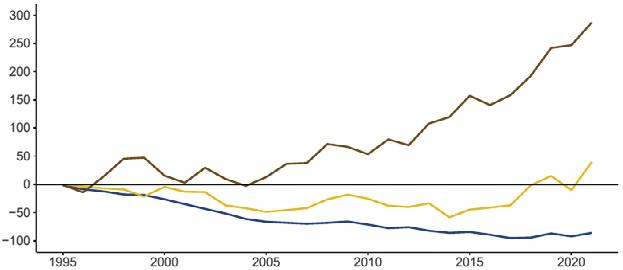



“I wasn’t,” he replied.




Downs Organic Stud SHIRE® Hair Ram Sale http://bidr.co.nz/auction/1756

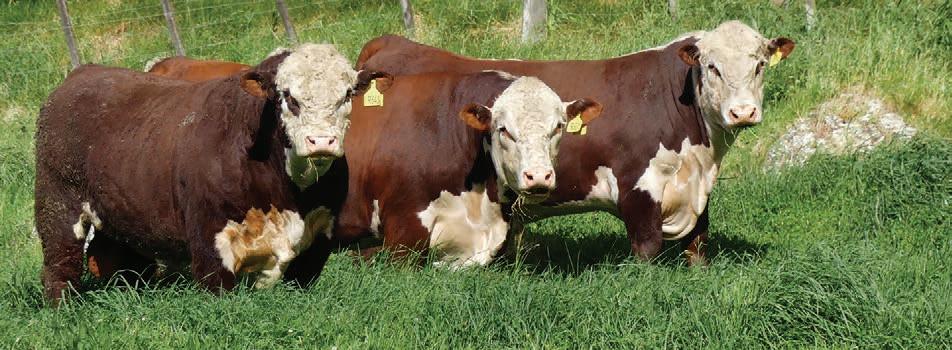






L IVEsTOCKEXPORTERs C U R R E N T L Y P U R C H A S I N G British Alpine Buck & Doe Kids Saanen Doe Kids Toggenburg Buck & Doe Kids Minimum weight 18kg at delivery mid January. Minimum number 20HD. All animals must meet export protocols. Top money paid. Enquiries to: Paul Tippett 027 438 1623 www.austrex.com A UsTREX NZ LTD P: (06) 874 7844 M: 027 4888 635 E: info @ koanuiherefords.co.nz www.koanuiherefords.co.nz Top shelf bulls available Celebrating 50 years! Est. 1972 Well grown, young sires currently available for sale. Contact us or your agent for more information. “To promote the concept of genetic selection for parasite resistance as a sustainable, long-term solution to worm challenges and drench resistance” The strategy of drenching to control parasites is failing. Incorporate WormFEC Gold genetics for long term solution and higher performance. Beef and Lamb Low Input Progeny Test proves the worth of WormFEC Gold rams Top rams have high performance, less dags and less need for drenching. www.wormfecgold.co.nz WormFEC Gold flocks WormFEC connected flocks Dual Purpose Flocks DPF ( Cents ) WormFEC Gold flocks are 372c above the national average for DPF. Year WormFEC Gold flocks are also 584c above the national average for NZMW. For Sale – 300 Maternal and Terminal Rams proven to increase growth rate and meat yield of export lambs. Maternals Terminals Texel Meatmaker Wharetoa Maternal Suftex Meatmaker x Suftex On Farm Auction: Friday 16 Dec at 12 midday, Inspection from 10am. Superior Genetics for Greater Profitability LK0108979© Garth Shaw: 027 273 7037 Warwick Howie (PGGW): 027 437 5276 e: wharetoa@farmside.co.nz LK0113496© www.wharetoagenetics.co.nz Proven by Performance Andy 027 238 4961 • halfy490@gmail.com Stewart 06 372 2770 • texels4u@gmail.com WAIRARAPA TEXEL DEVELOPMENTS Tried, tested, proven and matched perfectly to New Zealand conditions for efficient, cost effective lamb production. WTD STORE LAMB DIRECT BUY-BACK PLAN After a very positive start to our store lamb direct buy back plan Wairarapa Texel Developments will again offer this exciting option to our genetic user clients to sell surplus Texel cross store lambs directly back to us. For further details regarding this program please contact Andy 027 238 4961. WAIRARAPA TEXEL DEVELOPMENTS THE TERMINATOR -PACKING MEAT “Meating the Market” With 100 plus Texel 2th rams and 80 plus Suftex 2th rams All fully SIL recorded for sale 2022 Plus – 130 plus ram hoggets available for 2023 ewe hogget mating. Inspection and enquiry are always welcome, or visit our Facebook page wairarapa texel development Texel Flock No 10 SIL No. 2960 Suftex Flock SIL No 5044 LK0113552© Check out Poll Dorset NZ on Facebook LK0112874© www.dyerlivestock.co.nz Ross Dyer 0274 333 381 STOCK REQUIRED 1YR BEEF HEIFERS 280 330kg 290 340kg 1YR FRIES BULLS 2YR ANGUS STEERS 460 540kg 340 400kg 1YR ANGUS STEERS TERMINAL MALE LAMBS app 30 32kg 2YR ANGUS HEIFERS 400 440kg E info@rdlfinance.co.nz A Financing Solution For Your Farm WEDNESDAY 7TH DECEMBER 2022 12 Noon On A/c Client Charolais Autumn Weaners 28 x Steers & 22 Heifers All weighed on farm on the 28/11. Steers avg. 223kgs & Heifers avg. 196kgs. They come to you in fantastic order, a credit to the Vendor. All up to date with vaccinations and have recently had a pour on drench on the 28/11. View listing WAI94368 on mylivestock.co.nz Sale will be livestreamed via MyLiveStock Contact: Mark Mackie 027 451 5311 FRANKTON CATTLE SALE LK0114098© ✔ No dagging ✔ No dip, drench since 1989 ✔ No shearing ✔ http://www.organic-rams.co.nz/ Also Tufty® (polled Highland) bulls, cows and calves available. Mangapiri Downs Organic Stud TUFTY® Cow & Calf Sale http://bidr.co.nz/auction/1759 Mangapiri
HARDY, LOW INPUT EASY CARE MEAT SHEEP HAIR SHIRE® Stud Ram Sire “SILVER” progeny for sale HAIR SHIRE® Stud Ram Sire “VENTURER” progeny for sale Ph 027 225 5283 BOOK SHIRE® RAMS NOW LK0114059© 35 Livestock SHEEP & BEEF REPORT Subscribe from only $100* per month agrihq.co.nz/our-industry-reports * Prices are GST exclusive
SALE TALK
FARMERS WEEKLY – farmersweekly.co.nz – December 5, 2022 Livestock 35

































OPEN DAY AT GLENLANDS SHEEPMASTER STUD 12.30pm • 15th Dec •1330 State Highway 5, Glengarry Ph: +64 27 250 2850 • info@glenlandsfarm.co.nz Co-hosted by Founding Breeder, Neil Garnett with stud owners Antoinette & Dean Martin What makes a SheepMaster? No shearing • No crutching • No tailing • No flies • Fertility • Feet – walkability • Productivity • Easy manage • Early maturity • Drought tolerant • Hardy, tick resistant • Productive all regions • Aseasonal Dean & Antoinette Martin • Glenlands Farm, Hawkes Bay, NZ Ph: +64 27 250 2850 • E: info@glenlandsfarm.co.nz www.glenlandsfarm.co.nz www.sheepmaster.com ✓ Sustainability ✓ Profitability Perfect back leg structure, feet and hocks Long muzzle = long body Strong Sire‘s head & long ears = fast growth Strong, broad brisket More muscle, less fat 100% shedding summer coat. Winter coat adapts to extreme cold and heat Strong bone and front leg structure Perfect width between front legs SILKY 100% SHEDDING SKIN LK0114005© SUFFOLK, SOUTH SUFFOLK, CHAROLLAIS and % CHAROLLAIS TUESDAY 13 DECEMBER 2022 Viewing from 2:00pm Helmsman Sale 3:30pm Belmont Station 50 Kerr Road, Cave South Canterbury Hill bred Commercially farmed SIL recorded Eye muscle scanned Bruceollosis Accredited Over 50 years of breeding For more information or to request a catalogue, contact: WATERTON SHEEP STUD Chris Hampton 03 614 3330 • 027 202 5679 cahampton@xt ra.co.nz • ww w.hazlett.nz 9th THE SALE WILL BE L IVESTREAMED ON : Romani Coopworths Ross Richards, Taumarunui • Phone 07 895 7144 romani@farmside.co.nz • Romani commercial hoggets winner of 2017 NZ Ewe Hogget Competition Large Flock Award, 2018 winner Coopworth section • Romani flock finalist for 2017 NZ Sheep Industry Awards Maternal Trait Leader Parasite Resistance LK0113778© Struggling with triple drench resistance? Facial Eczema damaging your sheep production? Barbers-poll sucking the life out of sheep performance? Flystike eating up your time and energy? Choose Romani sheep genetics for maximum disease tolerance and production with minimum inputs Romani rams are top performers in B+LNZ Genetics Low Input Progeny Test Fully SIL recorded under true commercial conditions Upcoming Auctions TUESDAY 6 DECEMBER 1pm Charollias Sheep NZ Ram Sale WEDNESDAY 7 DECEMBER 1pm La-Mac Combined Ram Sale 1.30pm Ruapehu Red Deer Stag Sale 2pm Ratanui Suffmax Ram Sale THURSDAY 8 DECEMBER 7pm Mangapiri Downs Organic Stud Tufty Cow & Calf Sale FRIDAY 9 DECEMBER 1pm Stoneylea Suffolk Ram Sale 1.30pm Forest Road Farm Stag & Hind Sale 3.30pm Waiere Half Bred Ram Sale Regular Livestream coverage of eight North Island Saleyards. bidr.co.nz 36 FARMERS WEEKLY – farmersweekly.co.nz – December 5, 2022 Livestock 36

December 2022 Sales WEDNESDAY 7TH 11am Fairlight Station Northern Southland 1.30pm Ruapehu Deer Taihape FRIDAY 9TH 1.30pm Forest Road Deer Farm Hawkes Bay WEDNESDAY 14TH 1pm Peel Forest Est. Peel Forest Forester Genetics January 2023 Sales SUNDAY 8TH 1pm Peel Forest Est. Peel Forest 4.30pm Deer Genetics NZ Geraldine MONDAY 9TH 11am Raincliff Station Wapiti & Red Raincliff 4pm Rothesay Deer Methven TUESDAY 10TH 4.30pm Black Forest Deer Park Outram WEDNESDAY 11TH 1.30pm Netherdale Deer Balfour THURSDAY 12TH 12.30pm Arawata Red Deer Pinebush 5pm Altrive Red Deer Riversdale FRIDAY 13TH 2pm Wilkins Farming Ltd. Athol SUNDAY 15TH 1.30pm Lochinvar Wapiti Te Anau MONDAY 16TH 1pm Littlebourne Wapiti Winton 3.30pm Tikana Wapiti Winton TUESDAY 17TH 1pm Clachanburn Elk Ranfurly PGG Wrightson Deer Specialist Team Graham Kinsman NZ Deer Stud Co-ordinator 027 422 3154 Murray Coutts Mid & South Canterbury 027 403 9377 John Williams Otago 027 241 4179 Ben Beadle Southland 027 728 1052 Ron Schroeder North Canterbury. Marlborough-West Coast 027 432 1299 John Duffy South Island Auctioneer 027 240 3841 Steve Annan North Island 027 215 6671 PGW New Zealand Hind/Stag/Wapiti Bull Sales Itinerary Combined onfarm/ sale | bidr.co.nz Annual 2yr sire stag sale Wednesday 7 December 1:30pm at 37 Pukenaua Rd, Taihape • 33 stags with 12mth BVs +26 to +33kg • Highest average 12mth BV stag auction in NZ since 2011 • Maternal reds selected on temperament and fully guaranteed • Transport of two or more stags offered at vendor’s expense For further information contact Paul Hughes 027 446 6309 • www.deerstud.nz Gareth Williams 0275 264 613 PRELIMINARY NOTICE Dannevirke Ewe Fair Dannevirke Sale Yards 12 January 2023 11.30am CAPITAL STOCK EWE SALE TE MAIRE FARM Tourere Road, Flemington a/c S Robinson & J Wyn-Harris Approx 4000 Romney Coopworth ewes comprising of: 1200 2th ewes 800 4th ewes 1500 6th-4yr ewes 500 5yr ewes Auctioneers note: • Due to farm sale. No ewes sold prior to sale • This is a genuine opportunity to purchase capital stock ewes with proven performance • FE tolerant • Marlow bred Tier 1 Coopworth rams purchased and used since 2017 • Ewes have had Toxo & Campy shots and given a Salmonella shot as 2th’s • 5yr flock average scanned 167% with the 5yr ewes tupped 4 March & 2th-4yr tupped 10 April • FECRT Parasite data available on request Enquiries: Matt Lorck 027 206 4373 Jason Wyn Harris 027 710 9426 LK0113878© Stortford Lodge Sale Yards Stortford Lodge MA Ewe Fair Tuesday 13th December 10.30am Total yarding 6265 Comprising: 1200 2th Ewes 670 4th Ewes 2295 MA Ewes 2100 5-year Ewes Enquiries: Neil Common 027 444 8745 LK0114047© Advertise with us Last issue for 2022 December 19 First issue for 2023 January 16 Contact your partnership manager for deadlines Office close dates December 20 to January 8 37 FARMERS WEEKLY – farmersweekly.co.nz – December 5, 2022 Livestock 37
Markets
Are
really worth the gamble?
EVERYWHERE in the country agents have been saying the same thing –buyers want the shortterm store lambs. That’s meant that while good-sized terminal types are moving relatively freely, finding takers for anything 25kg or under is a tough ask, to the point where some South Island vendors aren’t even bothering to offer up their tail-enders.
Buyers’ perception is that it could all turn to custard before they reach finishing weights, and therefore the potential extra money in the trade isn’t worth the gamble. Not to mention some buyers expect store prices will keep easing.
But is everyone being too cautious?
At the moment you can pick up
a 25kg store lamb in the North Island for about $82.50/head. Assuming a growth rate of 100g/ day, you could reach 40kgLW (around 17.5kgCW) in April. AgriHQ, and much of the industry, is forecasting an average $7.60/ kg slaughter price for then, which would return you $50/head before other costs.
That return is only marginally better than what was possible last year but is well in excess of the normal $23-$36 range over the past decade. Of course costs have sky-rocketed since then and will have chewed into end profits, but odds are current store lamb buyers will have a dollar to show for their trade when they cash out.
These figures should hold relatively true even if the lambs grow a little faster or slower given the slaughter market usually stabilises from February through to winter. Trends in the South Island are similar too, just with

end margins a few dollars lower. Another question is when would be the ideal time to buy. History shows that usually depends on feed.
latter due to a spring flush ending as export markets started getting the jitters. With no spring flush to over-inflate prices, export markets already “jittered”, and everyone having enough rain to keep them ticking over to next year, such a big drop is highly unlikely.
$82.50/head.
worse than last year, and slaughter prices are likely to tail off more sharply than back then. But it seems as though the worst of the market adjustment has come early this year.

The biggest drops were back in 2017 and 2019 when 70c/kg came out of the market between now and Christmas – the former was due to a Hawke’s Bay drought, the
At this point we are shaping up more like a year ago. Crops were slow to get planted then, much like this year, and lambs were subpar with growth too. The market was virtually stable over those weeks and only started dropping off after the New Year when the King Country ran out of feed and water.
That’s not to say store lamb prices won’t weaken this time around, considering the cropping and lamb growth situations are
Besides the obvious wildcard that is the weather, the market early next year could be dependent on how many wouldbe vendors have withheld selling some of their lambs because store returns haven’t been too disappointing to date. This could add extra supplies to the midlate summer market. At the same time, early drafts are seeing fewer making the cut for processing. When combined with some meat companies lifting minimum weight requirements on lamb, this could have a similar effect.
34 Markets
Proudly sponsored by
LIGHTWEIGHT: At the moment you can pick up a 25kg store lamb in the North Island for about
lambs
At the end of the day, when the numbers are crunched and the jitters tabulated, buyers of store lambs coming in shy of 25kg should have a dollar to show for their trade when they cash out come April. Buyers’ perception is that it could all turn to custard before they reach finishing weights, and therefore the potential extra money in the trade isn’t worth the gamble. See what sold today REPORTS EYE LIVESTOCK Results from the saleyards, including per kilo prices for store lambs, delivered straight to your inbox. Subscribe from only $35* per month agrihq.co.nz/livestock-reports * Prices are GST exclusive
lighter store
Reece Brick MARKETS Sheep and beef
Weekly saleyards
On-farm lamb sales continued in the South Island and as grass covers continue to exceed expectations so do prices. The second annual Ahuriri on-farm lamb sale in Tai Tapu was held on November 24 and Rural Livestock agent Bob Davidson said prices were better than expected by $5-$10. Prime blackface mixed-sex lambs made $135-$169.50 and stores, $76-$110. Perendale wethers ranged from $64.50-$108. Eskvale Station, Amberley, offered up nearly 3300 lambs. Suffolk-Dorset Down mixed-sex sold for $93-$186 and Romdale wethers $84-$148 for a sale average of $132 – only $5-$6 per head behind last year.
Pukekohe | November 26
$/kg or $/hd
Aut-born yearling steers 3.09-3.20
Yearling steers 650-890
Yearling heifers 900-1010
Weaner steers 380-600
Weaner heifers 370-590
Prime steers 3.10-3.25
Prime heifers 3.01-3.16
Boner cows 1.40-2.15
Store lambs, all 78-118
Prime ewes, all 88-158
Prime ram hoggets 130-200
Prime lambs, all 130-152
Tuakau | November 24 | 650 cattle
$/kg or $/hd
2-year dairy-beef steers, 400-550kg 3.10-3.27
2-year dairy-beef heifers, 350-420kg 3.00-3.14
Yearling Hereford-Friesian steers, 250-350kg 3.50-3.83
Yearling heifers, 250-350kg 3.20-3.41
Tuakau | November 28 | 1800 sheep $/kg or $/hd
Store lambs, all 70-131
Prime ewes, all 80-110
Prime hoggets, all 138-190
Tuakau | November 30 | 300 cattle $/kg or $/hd
Prime steers, 500-750kg 3.03-3.12
Prime heifers, 420-550kg 2.95-3.10
Boner cows, 420-600kg 1.90-2.10
Rangiuru | November 29 | 231 cattle
$/kg or $/hd
2-year Hereford-Friesian heifers, 376-463kg 2.81-2.90
Yearling Hereford-Friesian steers, 354-426kg 3.13-3.20
Yearling Hereford-Friesian heifers, 331-414kg 2.98-3.04
Prime Hereford-Friesian steers, 530-628kg 3.11-3.17
Boner cows, 501-520kg 1.98-2.04
Frankton | November 29 | 467 cattle
$/kg or $/hd
2-year dairy-beef steers, 462-593kg 2.98-3.05
2-year dairy-beef heifers, 383-476kg 2.90-3.04
Yearling steers, 293-318kg, tops 3.49-3.53
Yearling dairy-beef steers, 290-350kg 3.29-3.35
Yearling Hereford-Friesian heifers, 275-310kg 3.14-3.18
Yearling dairy-beef heifers, 248-389kg 2.78-2.96
Prime dairy-beef steers, 535-669kg 2.97-3.05
Boner cows, 411-510kg 1.82-1.89
Frankton | November 30 | 642 cattle
$/kg or $/hd
2-year dairy-beef heifers, 425-454kg 2.86-2.95
Aut-born yearling Speckle Park-Friesian steers, 360-383kg 3.32-3.42
Aut-born yearling dairy-beef steers, 389-453kg 2.91-3.11
Aut-born yearling dairy-beef heifers, 335-363kg 2.77-2.87
Yearling Hereford-Friesian steers, 248-360kg 3.22-3.37
Yearling dairy-beef heifers, 285-335kg 2.81-2.93
Prime steers, 510-710kg 3.03-3.13
Prime heifers, 455-543kg 2.95-3.09
Te Kuiti | November 25 | 409 cattle
$/kg or $/hd
2-year dairy-beef steers, 448-625kg 3.04-3.17
2-year Angus heifers, 387kg, one line 3.22
Yearling dairy-beef steers, 340-436kg 3.05-3.25
Yearling dairy-beef heifers, 282-336kg 3.37-3.47
Yearling Hereford-Friesian heifers, 285-344kg 2.60-2.87
Matawhero | November 25 | 2664 sheep
$/kg or $/hd
Store male lambs, medium to heavy 91-125
Store mixed-sex lambs 111
Store ewe lambs, medium 97-114.50
Store ewes, medium to good 90-104
Prime mixed-sex lambs 140
Taranaki | November 30 | 369 cattle
$/kg or $/hd
2-year Friesian heifers, 453kg 2.6
Yearling Hereford-Friesian steers, 301-316kg 3.42-3.52
Yearling dairy-beef heifers, 327-383kg 3.16-3.17
Prime dairy-beef steers, 558-590kg 3.19-3.27
Prime heifers, 432-536kg 3.01-3.06
Stortford Lodge | November 28 | 3406 sheep
$/kg or $/hd
Prime ewes, heavy to very heavy 128-148
Prime ewes, good to very good 94-125
Prime lambs, very heavy 211
Prime lambs, good to heavy 161-185
Stortford Lodge | November 30 | 969 cattle, 564 sheep
Mixed-age Angus cows & calves,
2-year
$/kg or $/hd
2-year traditional steers, 435-588kg 3.38-3.48
2-year traditional heifers, 426-449kg 3.30-3.34
Yearling Angus steers, 490-501kg 3.35-3.36
39
capital stock, RW Angus bull
1820-1890
calves, capital stock,
& 3-year Angus heifers &
RW Angus bull 1890-2000
FARMERS WEEKLY – farmersweekly.co.nz – December 5, 2022 Markets 39
Stortford Lodge | November 30 | Continued
$/kg or $/hd
Yearling traditional steers, 383-422kg 3.67-3.84
Yearling Angus steers, 282-349kg 4.01-4.07
Yearling South Devon bulls, 402-538kg 3.40-3.62
Yearling Angus heifers, 301-347kg 3.46-3.57
Yearling exotic heifers, 311-357kg 3.52-3.77
Store Coopworth cryptorchid lambs, good, one line 96.5
Store mixed-sex lambs, good to heavy 120.50-164.50
Dannevirke | November 24 | 535 sheep
$/kg or $/hd
Store ram lambs 80
Store ewe lambs 82.5
Store mixed-sex lambs 57-106.50
Prime ewes, all 71-119
Prime hoggets, all 70-177
Feilding | November 25 | 1014 cattle, 2594 sheep
$/kg or $/hd
Mixed-age Angus cows & calves, 612kg 1800
3-year Friesian bulls, 563-602kg 3.27-3.31
2-year traditional steers, 458-551kg 3.51-3.63
2-year Hereford-Friesian steers, 463-553kg 3.26-3.36
2-year heifers, 377-494kg 3.13-3.35
Yearling traditional steers, 308-389kg 3.58-3.73
Yearling Hereford-Friesian steers, 323-378kg 3.35-3.54
Yearling Hereford-Friesian heifers, 268-357kg 3.20-3.36
Store blackface mixed-sex lambs, good 101-121
Store blackface mixed-sex lambs, medium 74-95
Store whiteface male lambs, good 93-109
Feilding | November 28 | 47 cattle, 2162 sheep
$/kg or $/hd
Prime beef-cross cows, 460-755kg 2.03-2.07
Prime dairy-beef heifers, 490-625kg 2.94-3.11
Boner Friesian cows, 452-547kg 1.77-1.89
Prime ewes, good 106-128
Prime ewes, medium-good 83-100
Prime mixed-sex lambs, heavy 119-186
Masterton | November 30 | approx 4000 sheep
$/kg or $/hd
Store blackface mixed-sex lambs, tops 102-110
Store whiteface cryptorchid lambs, tops 98-107
Store lambs, medium 70-85
Store lambs, small 50-65
Rongotea | November 29 | 250 cattle
$/kg or $/hd
Mixed-age Limousin cows & calves 1680-1705
2-year Limousin steers, 453kg 3.06
2-year steers, 415-570kg 2.60-2.99
2-year bulls, 391-505kg 2.91-3.25
2-year Limousin heifers, 414kg 3.05
2-year heifers, 354-610kg 2.50-2.80
Yearling Limousin steers, 344kg 3.40
Yearling dairy-beef steers, 258-308kg 2.14-2.78
Yearling dairy-beef heifers, 200-313kg 2.20-2.82
Weaner dairy-beef bulls, 98-175kg 375-485
Coalgate | November 24 | 222 cattle, 1758 sheep $/kg or $/hd
Prime traditional steers, 459-623kg 2.98-3.14
Prime Angus bulls, 940-1090kg 1.72-1.88
Prime Hereford-Friesian heifers, 467-620kg 2.88-3.00
Hogget ewes & lambs, all 60-74
Store Romney wether lambs, all 81-104
Prime ewes, most 80-156
Prime lambs, most 130-192
Canterbury Park | November 29 | 745 cattle, 1943 sheep $/kg or $/hd
2-year Hereford-Friesian steers, 381-461kg 2.70-2.93
2-year Angus-Friesian heifers, 380-416kg 2.62-2.89
Yearling Murray Grey steers, 282-324kg 2.75-2.98
Yearling traditional heifers, 292-302kg 3.08-3.25
Weaner Friesian bulls, 98kg 3.41
Prime Hereford-Friesian steers, 470-592kg 2.75-2.96
Prime Angus-Friesian heifers, 410-560kg 2.70-2.96
farmersweekly.co.nz/everyday farmersweekly.co.nz/everyday
40 FARMERS WEEKLY – farmersweekly.co.nz – December 5, 2022 Markets 40
Get exclusive daily news, weekly analysis, competitions and prizes, special offers and discounts.
‘EVERYDAY’ Subscribe to Farmers Weekly Online
Store mixed-sex lambs, medium to good 83-104
Prime ewes, medium 79-105
Prime hoggets, medium to good 107-160
Prime mixed-sex lambs, all 109-174
Temuka | November 24 | 1141 cattle $/kg or $/hd
2-year dairy-beef steers, 458-521kg 2.84-2.94
2-year dairy-beef heifers, 359-423kg 2.72-2.86
Yearling beef-cross steers, 255-394kg 2.63-2.87
Yearling Hereford-Friesian steers, 272-355kg 2.73-3.05
Yearling Friesian bulls, 272-331kg 2.79-2.90
Yearling Hereford-Friesian (red) heifers, 267-319kg 2.30-2.55
Temuka | November 28 | 377 cattle, 1772 sheep $/kg or $/hd
Prime traditional steers, 500-585kg 2.88-3.05
Prime Belgian Blue-cross heifers, 443-481kg 2.94-2.95
Prime Angus cows, 574-748kg 2.36-2.42
Boner Friesian cows, 620-738kg 1.98-2.12
Store mixed-sex lambs, good 103
Hogget ewes & lambs, all 50-81
Prime ewes, heavy 110-130
Prime hoggets, medium-good 145-160
Prime mixed-sex lambs,
1.80-2.06
Prime cows, 450-550kg
Prime steers, 470kg 2.67
Prime bulls, 580kg 2.86
Prime heifers, 380-420kg 2.20-2.35
Hogget ewes & lambs 70-75
Store hoggets, all 80-109
Prime ewes, all 74-126
Prime ram hoggets, heavy 80-94
Prime hoggets, heavy 152-174
Prime lambs, all 118-127
Dairy-Beef Weaner
Fairs | November 24 - November 30
Kaikohe | November 28 | 1000 cattle
Aut-born yearling heifers, 260-300kg
$/kg or $/hd
3.30-3.60
Aut-born yearling heifers 3.10-3.12
Aut-born weaner beef-cross steers 3.60-4.20
Aut-born weaner beef-cross bulls 3.10-3.30
Aut-born weaner heifers, 180-250kg 3.20-3.40
Wellsford | November 28 | 789 cattle
$/kg or $/hd
Aut-born weaner Hereford-Friesian steers, 217-239kg 900-935
Aut-born weaner Angus-Friesian steers, 229-266kg 780-900
Aut-born weaner Friesian bulls, 131-160kg 530-650
Aut-born weaner Charolais-Friesian heifers, 173-199kg 720-775
Weaner Hereford-Friesian steers, 123-126kg 680-780
Weaner Friesian bulls, 110-146kg 500-595
Weaner Angus-Friesian bulls, 106kg, one line 605
Weaner Hereford-Friesian heifers, 88-104kg 570-625
Frankton | November 24 | 1051 cattle
$/kg or $/hd
Weaner Friesian bulls, 120-150kg 570-650
Weaner Friesian bulls, 100-120kg 470-550
Weaner dairy-beef bulls, 110kg average 565
Weaner Hereford-Friesian bulls, 100-130kg 600-680
Lorneville | November 30 | 114 cattle
$/kg or $/hd
Weaner bulls, 100-150kg 260-560

Weaner heifers, 100-120kg 220-390
Honda Outdoors has everything you need for the garden, with a range of mowers, generators, pumps, trimmers, accessories and more. Head to hondaoutdoors.co.nz to find your closest store. hondaoutdoors.co.nz


41
..WITH EVERYTHING YOU NEED FOR YOUR GARDEN. Farmers Weekly_120x262_Back Ad.indd 1 8/11/22 10:55 AM
216
$/kg or $/hd
medium 120-140 Balclutha | November 30 |
sheep
Prime ewes, all 52-130
499
$/kg or $/hd
$/kg or $/hd
Prime ram hoggets 92-160 Charlton | November 24 | 161 cattle,
sheep
Store bulls 440 Store heifers 495-990 Store steers 630-1105 Store lambs, all 70-112 Prime ewes, all 60-158 Prime hoggets, all 90-180 Lorneville | November 29
Yearling steers, 290-327kg 680-1135 Yearling beef-cross heifers, 219-221kg 620-715
FARMERS WEEKLY – farmersweekly.co.nz – December 5, 2022 Markets 41
Sheep
42 FARMERS WEEKLY – farmersweekly.co.nz – December 5, 2022 Markets 42 AgriHQ market trends
Slaughter price (NZ$/kgCW) Last week Last year
Island lamb
8.25 9.45
4.60 6.75
8.15 9.10
4.50 6.60 Export markets
China lamb
10.00 13.87 Wool (NZ$/kg clean) Two weeks ago Last year Coarse crossbred ind. 2.66 2.69 37 micron ewe 2.70 30 micron lamb Beef Slaughter price (NZ$/kgCW) Last week Last year
Island P2 steer (300kg) 6.30 6.50
Island M2 bull
6.05 6.50
4.60 5.00
P2
6.10 6.20
5.80 6.10 South Island
4.50 4.80 Export markets (NZ$/kg) US imported 95CL bull 8.18 10.19 US domestic 90CL cow 8.60 8.91 Venison Slaughter price (NZ$/kgCW) Last week Last year North Island AP stag (60kg) 8.90 6.95 South Island AP stag (60kg) 8.95 6.85 Fertiliser NZ average (NZ$/tonne) Last week Last year DAP 1794 1308 Super 509 368 Urea 1340 1190 Urea (Coated) 1289 Exports NZ Log Exports (thous. Tonnes) Oct Last year China 1,697,452 1,719,378 Rest of world 175,899 233,845 Carbon price (NZ$/tonne) Last week Last year NZU 84.2 68.4 Cattle Sheep Deer Fertiliser Forestry Steer slaughter price ($/kgCW) Lamb slaughter price ($/kgCW) NZ lamb and mutton slaughter (thous. head) Stag Slaughter price ($/kgCW) NZ cattle slaughter (thous. head) Data provided by MARKET REPORT Subscribe from only $100* per month agrihq.co.nz/our-industry-reports Know the market A comprehensive, easy-to-read, weekly summary of NZ’s agricultural markets including sheep, beef, venison, dairy, grain, and wool. * Prices are GST exclusive 5.5 6.0 6.5 7.0 Nov Jan Mar May Jul Sep North Island South Island 7.5 8.0 8.5 9.0 9.5 10.0 Nov Jan Mar May Jul Sep North Island South Island 0 10 20 30 40 50 60 70 20-Aug 20-Sep 20-Oct 20-Nov 20-Dec 20-Jan 5-yr ave This year Last year 0 200 400 600 800 20-Aug 20-Sep 20-Oct 20-Nov 20-Dec 20-Jan 5-yr Ave This year Last year 6.5 7.0 7.5 8.0 8.5 9.0 9.5 Nov Jan Mar May Jul Sep North Island South Island
Meat
North
(18kg)
North Island mutton (25kg)
South Island lamb (18kg)
South Island mutton (25kg)
(NZ$/kg)
aps
North
North
(300kg)
North Island M cow (200kg)
South Island
steer (300kg)
South Island M2 bull (300kg)
M cow (200kg)
NZX market trends
Close
Listed
Company
ArborGen Holdings Limited 0.22 0.27 0.199
The a2 Milk Company Limited 6.65 6.74 4.2

Comvita Limited 3.24 3.78 2.98
Delegat Group Limited 10 14.45 9.83



Fonterra Shareholders' Fund (NS) 3.1 3.78 2.75

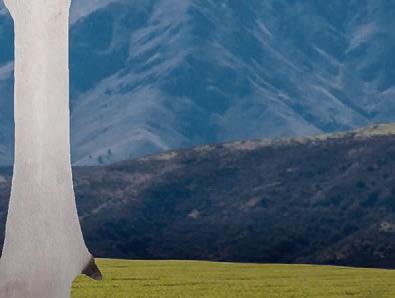

Foley Wines Limited 1.3 1.57 1.3
Greenfern Industries Limited 0.115 0.25 0.069
Livestock Improvement Corporation Ltd (NS) 1.35 1.73 1.3
Marlborough Wine Estates Group Limited 0.18 0.26 0.155
NZ King Salmon Investments Limited 0.235 1.38 0.187

PGG Wrightson Limited 4.15 5.76 3.9
Rua Bioscience Limited 0.22 0.53 0.22
Sanford Limited (NS) 4.4 5.07 4.03
Scales Corporation Limited 4.38 5.59 4.07
Seeka Limited 3.28 5.36 3.28
Synlait Milk Limited (NS) 3.05 3.58 2.76
T&G Global Limited 2.5 3.01 2.5
43 FARMERS WEEKLY – farmersweekly.co.nz – December 5, 2022 Markets 43
High
Low
Close YTD
YTD
Index
S&P/NZX 10 Index
S&P/NZX Primary Sector Equity Index 12432 14293 11724 S&P/NZX 50
11552 13150 10588
11426 12725 10291
of market
Agri
Grain Dairy Dairy Futures (US$/t) Nearest contract Last price* Prior week 4 weeks prior WMP 3300 3350 3290 SMP 3100 3200 3130 AMF 5650 5650 5500 Butter 4960 4960 4835 Milk Price 8.88 8.95 9.00 * price as at close of business on Wednesday Data provided by Canterbury feed wheat ($/tonne) 5pm, Wednesday Milk price futures ($/kgMS) Canterbury feed barley ($/tonne) Waikato palm kernel ($/tonne) WMP futures - vs four weeks ago (US$/tonne) S&P/NZX 10 INDEX 11426 S&P/FW PRIMARY SECTOR EQUITY 12432 S&P/NZX 50 INDEX 11552 so they can udderly take on anything Learn online with a Dairy Assistant course getmilking.co.nz Grow your team’s skills 7.0 8.0 9.0 10.0 11.0 Nov Jan Mar May Jul Sep Nov Sep-2023 Sep-2024 350 400 450 500 550 600 650 700 Nov Jan Mar May Jul Sep Nov 350 400 450 500 550 600 650 700 Nov Jan Mar May Jul Sep Nov 3150 3200 3250 3300 3350 3400 3450 3500 3550 Dec Jan Feb Mar Apr May Latest price 4 weeks ago 300 350 400 450 500 550 Nov Jan Mar May Jul Sep Nov
shares
Weather
Looking wet in the west
B
A low didn’t eventuate for the upper North Island on Friday. It could have brought some rain, so remaining dry there. But that isn’t an issue as western parts of the North Island certainly have enough soil moisture.


The weekend saw a high begin to push in from the Tasman then a front moved northwards onto the South Island on Sunday bringing a round of showers in the east and some rain out west.

Compared to this time last year, Canterbury is now looking a bit healthier in terms of soil moisture. Compared to the historical average we are looking slightly better also. The main standout at the moment is the wetter-than-average weather we have had for western regions, especially the western North Island. The accompanying map shows the high soil moisture conditions.

Monday this week starts out with a southwesterly airflow and a few showers affecting the South Island, drier to the
ruralweather.co.nz
Soil moisture Temperature
EYOND a few tweaks, last week’s weather pretty much followed the game plan in terms of fronts and timing of systems. Wednesday’s weather did see southwesterlies spread northwards but unstable conditions mainly occurred for the western North Island.Deficit 9am 29/11/2022
north. Tuesday the airflow tends more to the south with showers likely for eastern regions. Showers clear for the West Coast meanwhile, with only a few brief showers moving through for the western North Island.
Mainly dry on Wednesday as a high-
Foot and Mouth Disease
Last 15 days rain
Observed rainfall 9am 14/11/2022 to 29/11/2022
pressure system waiting in the Tasman Sea moves in. Dry for most on Thursday, but our high is getting squeezed out to the northeast with northerlies increasing over the South Island. Rain moves into South Westland.
A front pushes northwards over the South
Observed mean temperature 9am 14/11/2022 to 29/11/2022

Island on Friday, bringing some wet weather. Meanwhile a low moves in from the Tasman bringing an increasing northeasterly airflow for the North Island with rain pushing in from the north. It’ll be unsettled on the weekend thanks to a low. The West Coast looks to stay dry though.
In the unlikely event FMD was to enter New Zealand, it would devastate our primary sector and rural communities. OSPRI is working closely with the Ministry for Primary Industries (MPI) and the primary sector to ensure we are best-using the tools and data we have available to support a response team in the event of an outbreak.
Please do the following:
• Ensure your contact details in NAIT are correct
• Tag AND register all of your NAIT animals
• Record all movements within 48 hours
• Sign up to MyOSPRI
Back Page Solus 190mm h x 262mm w NAIT is an OSPRI programme Failure to comply with NAIT obligations may result in fines or prosecution issued by the Ministry for Primary Industries. For more information about your obligations as a PICA, please visit our website ospri.co.nz. If you
have followed all of the steps and still need help, our Support Centre is ready to assist you. Call 0800 482 463 For more information see OSPRI.co.nz
It’s critical your data in NAIT is accurate so our biosecurity response team can rapidly track and trace the disease, improving the likelihood of eliminating it sooner.
Play your part, update NAIT 44 Weather
 Rennie NEWS Forestry
Rennie NEWS Forestry


























 Tim Henshaw Westpac
Tim Henshaw Westpac


























































































 Richard Rennie NEWS Emissions
Richard Rennie NEWS Emissions




























































 Scott MARKETS Beef
Scott MARKETS Beef
































































































































































































































































